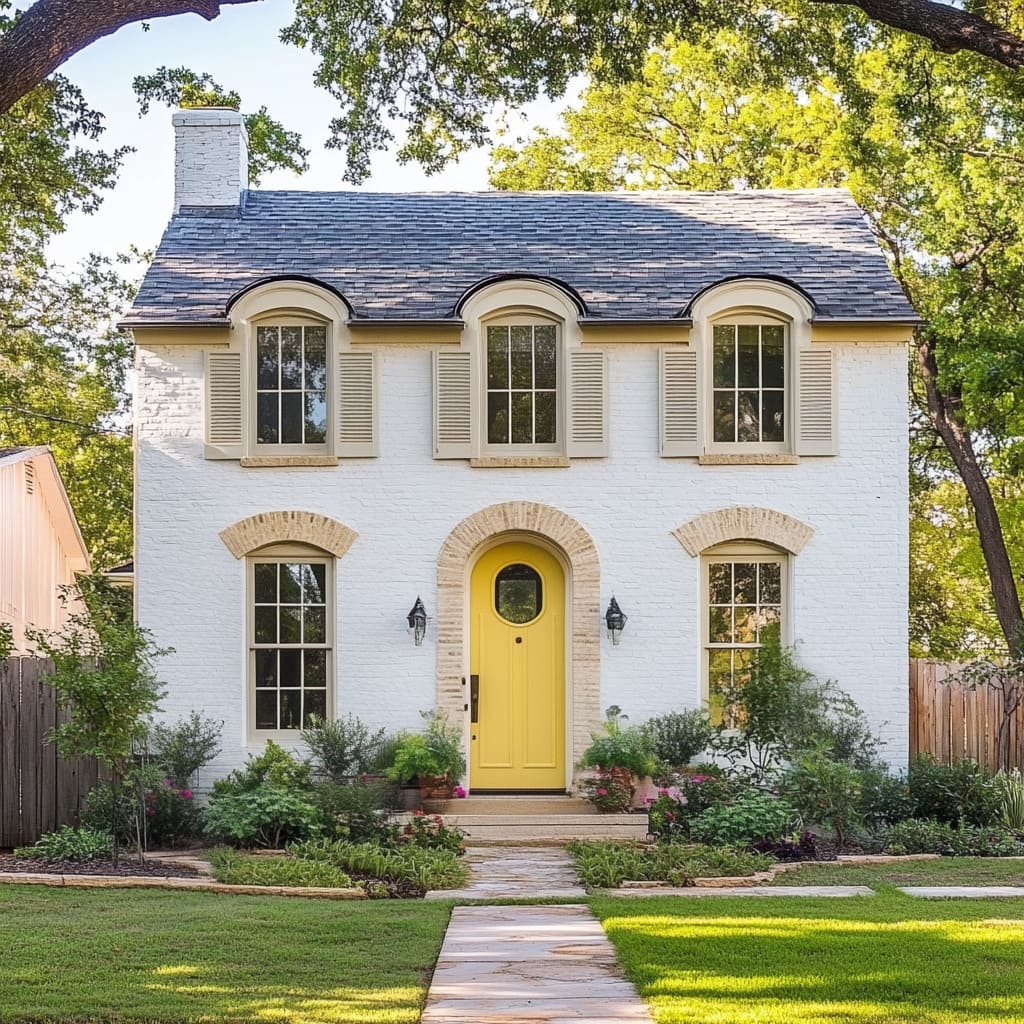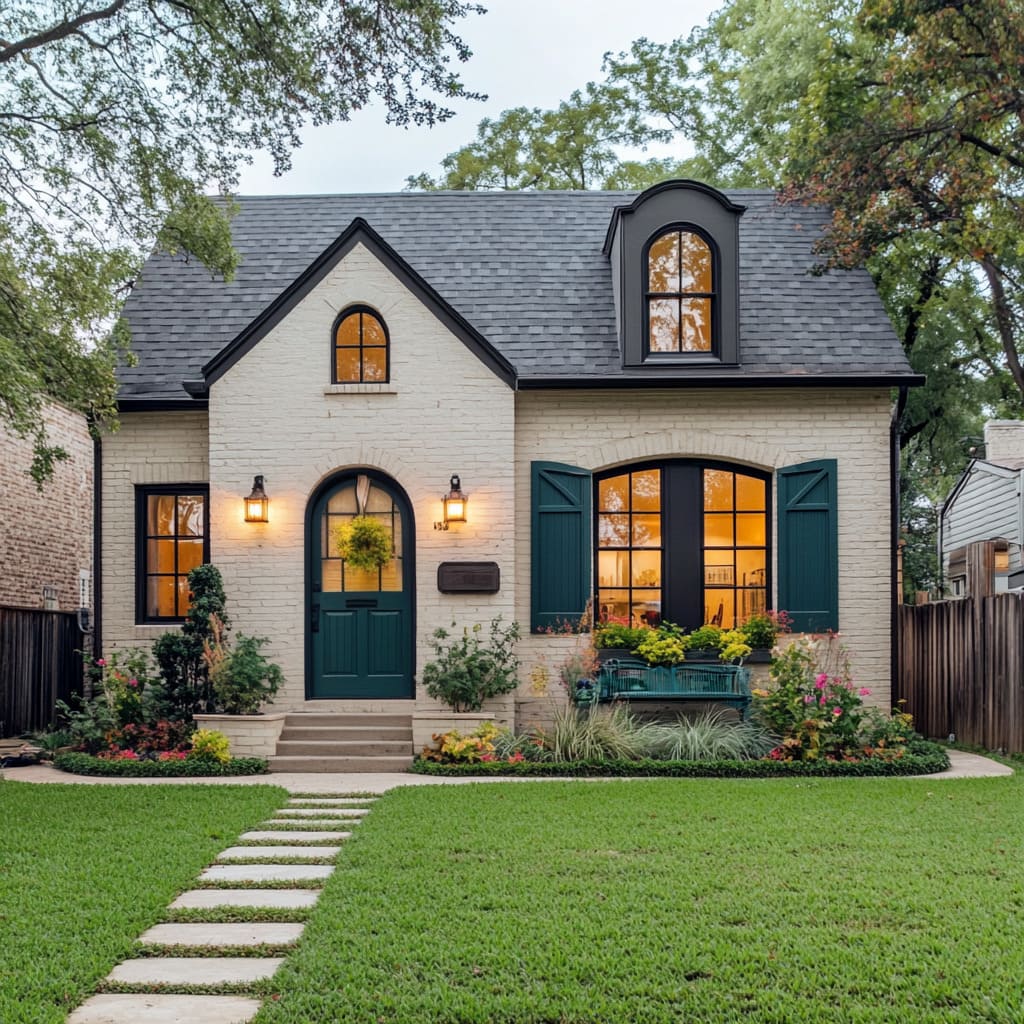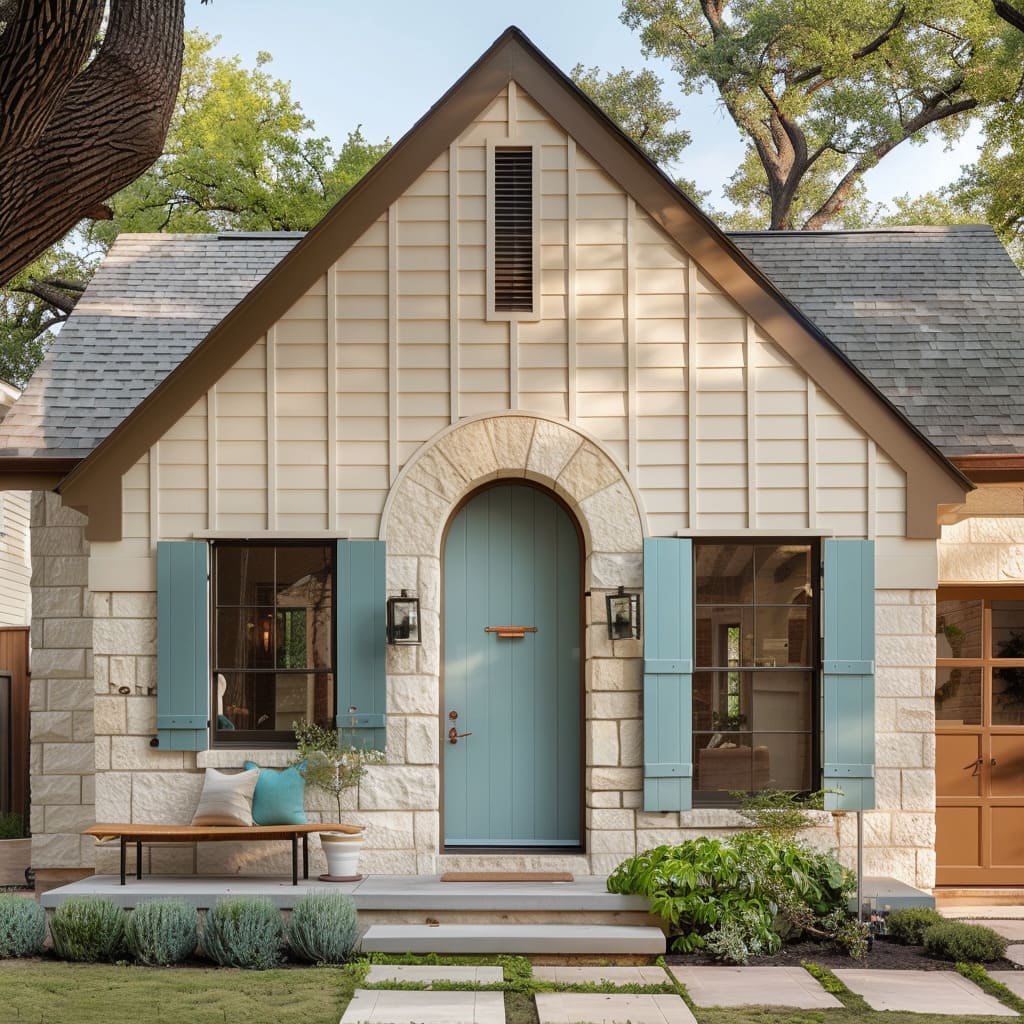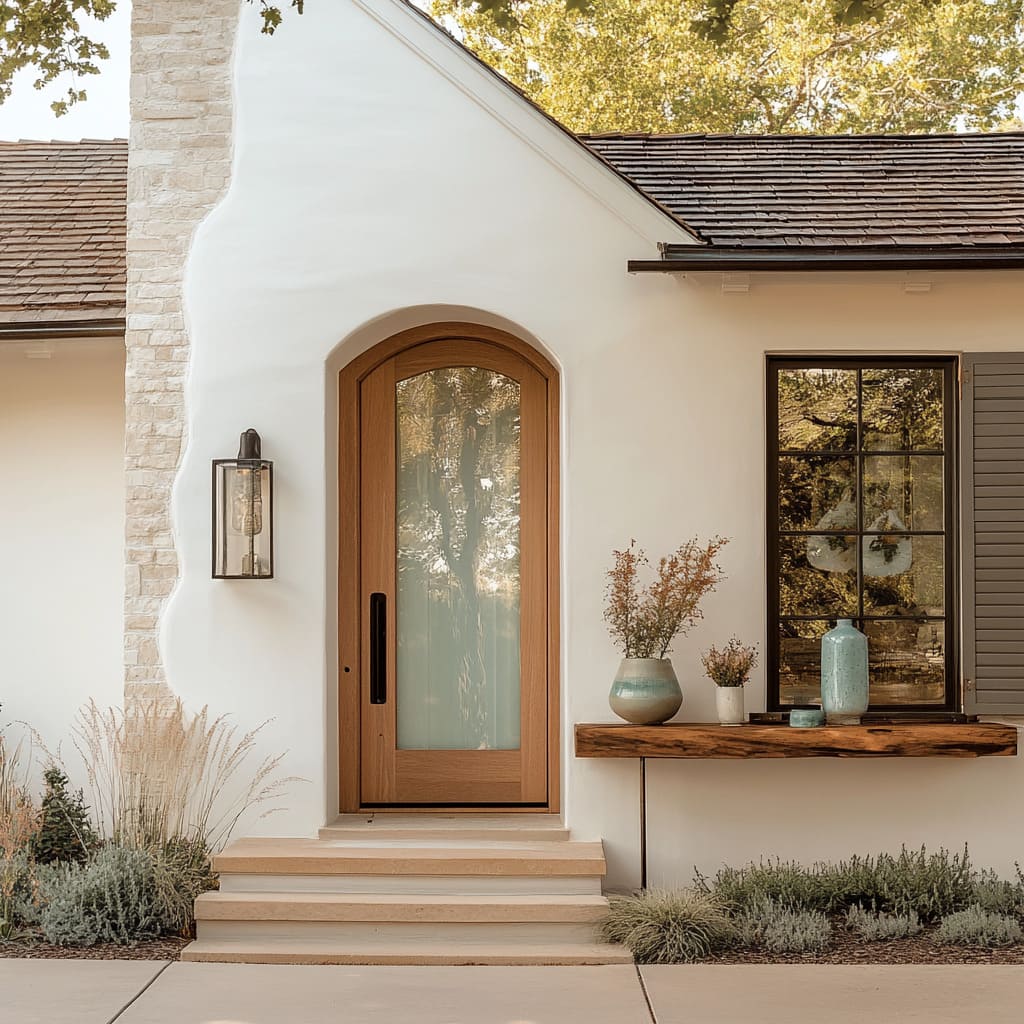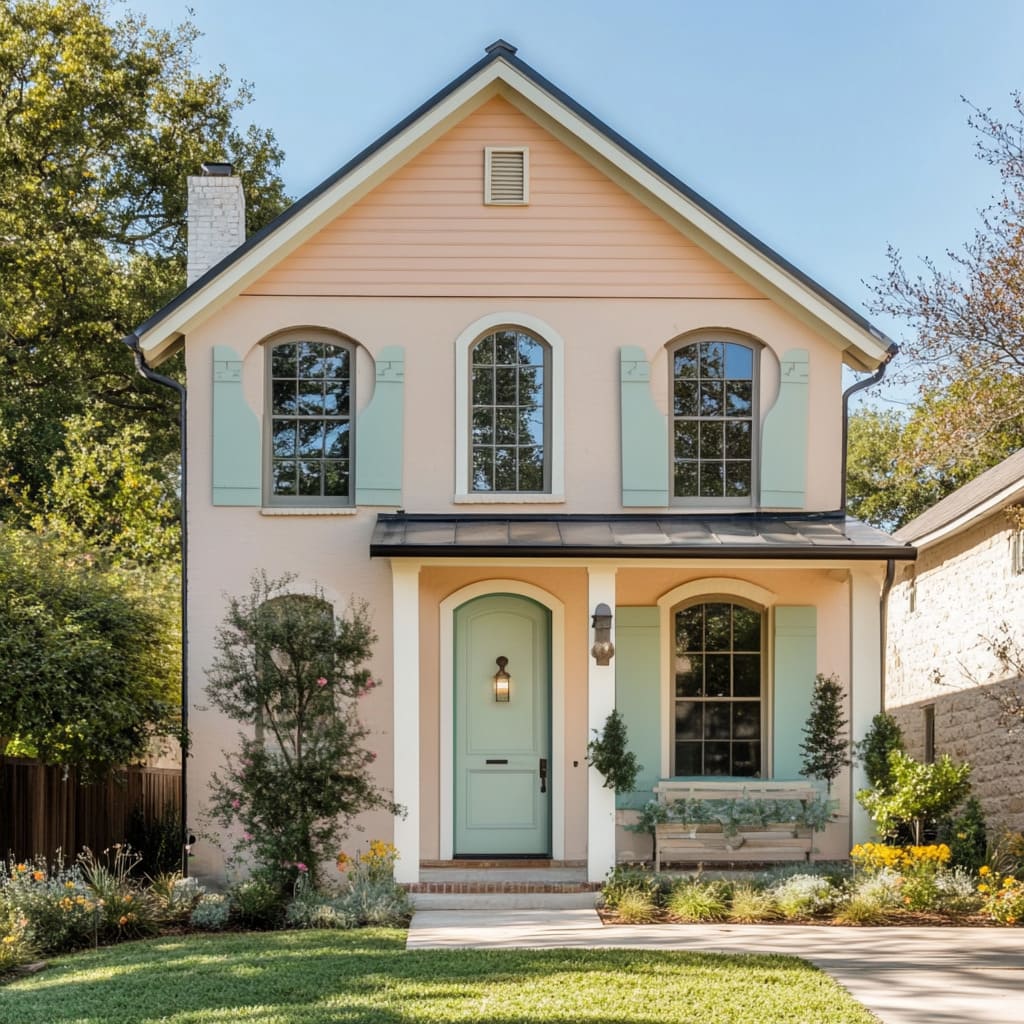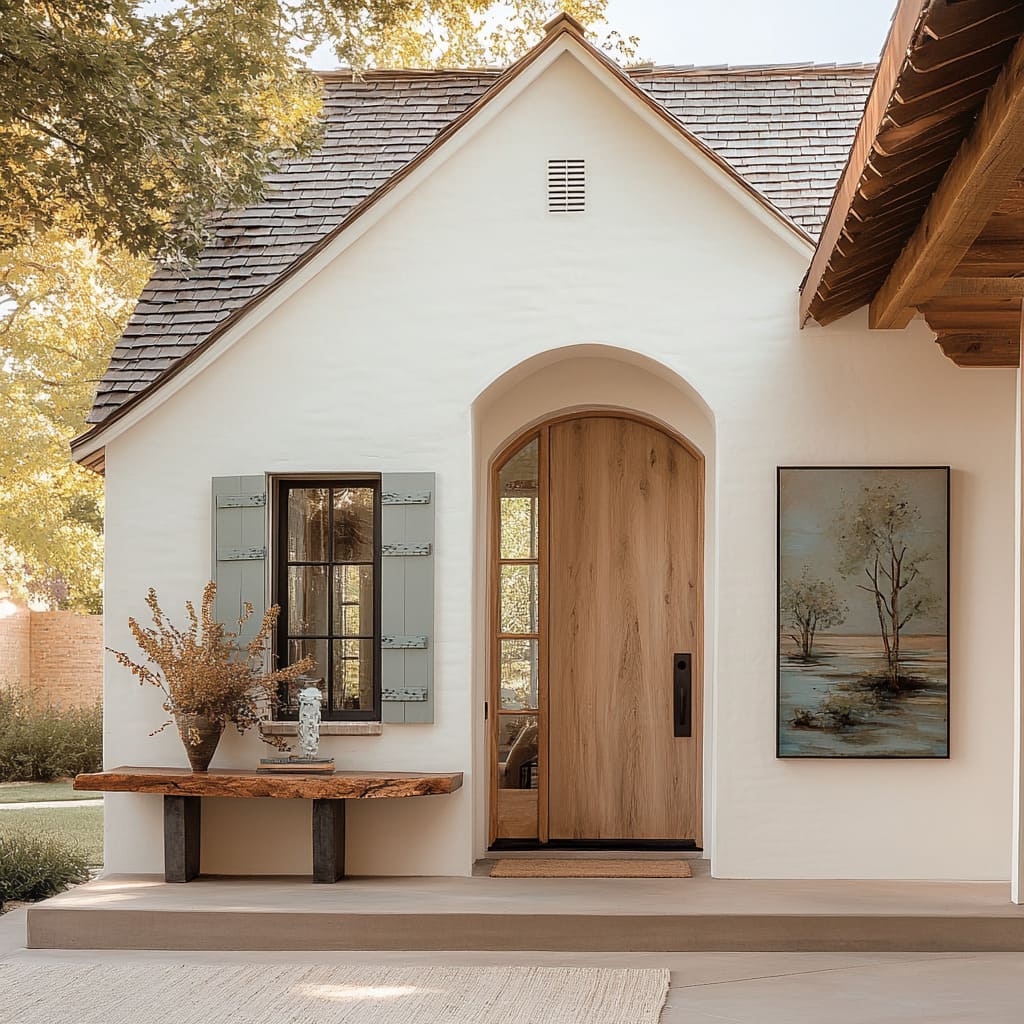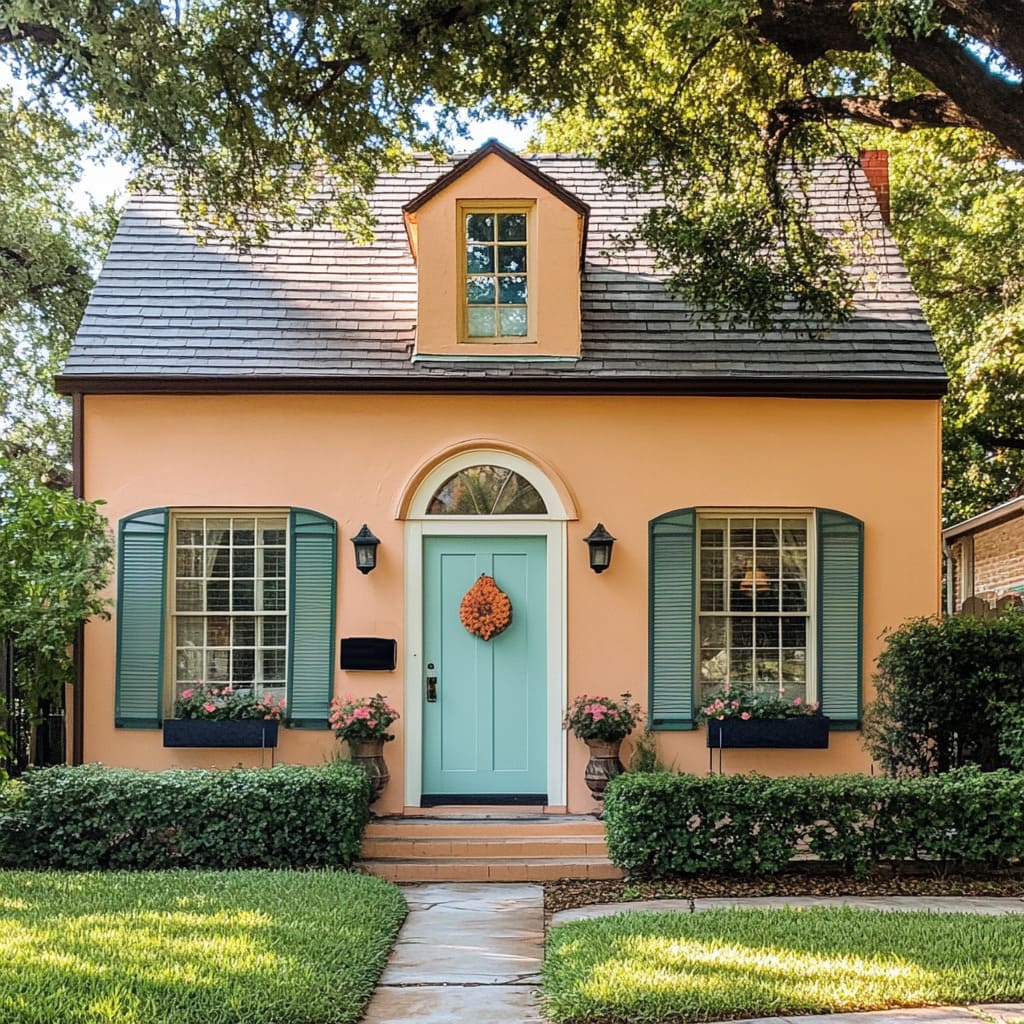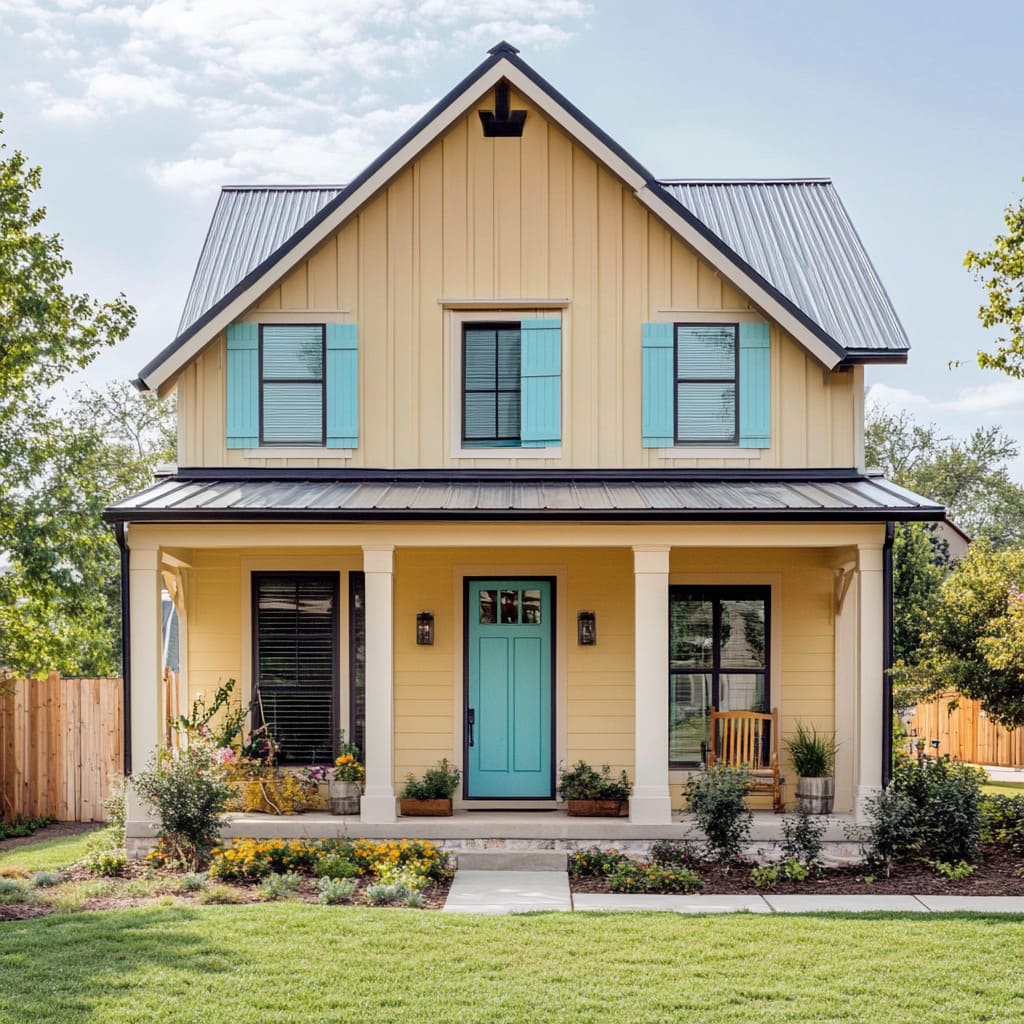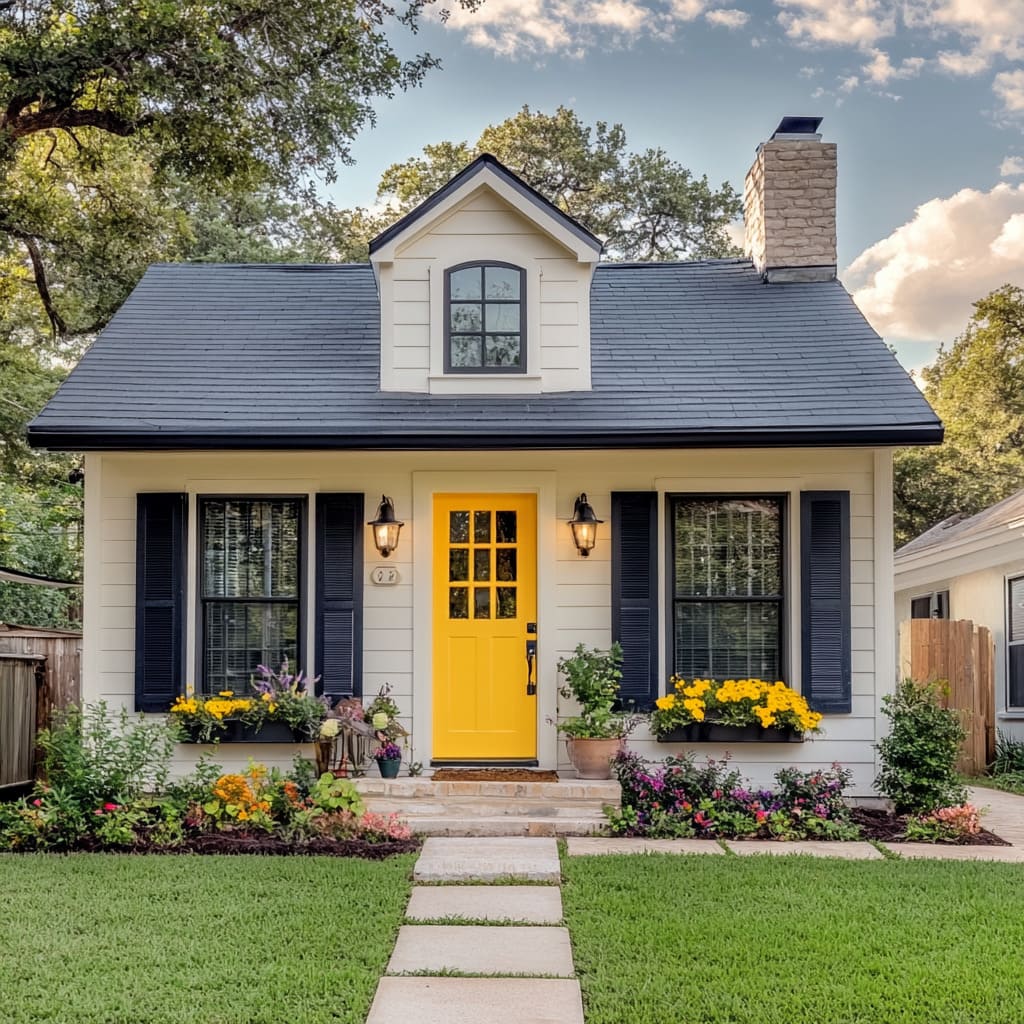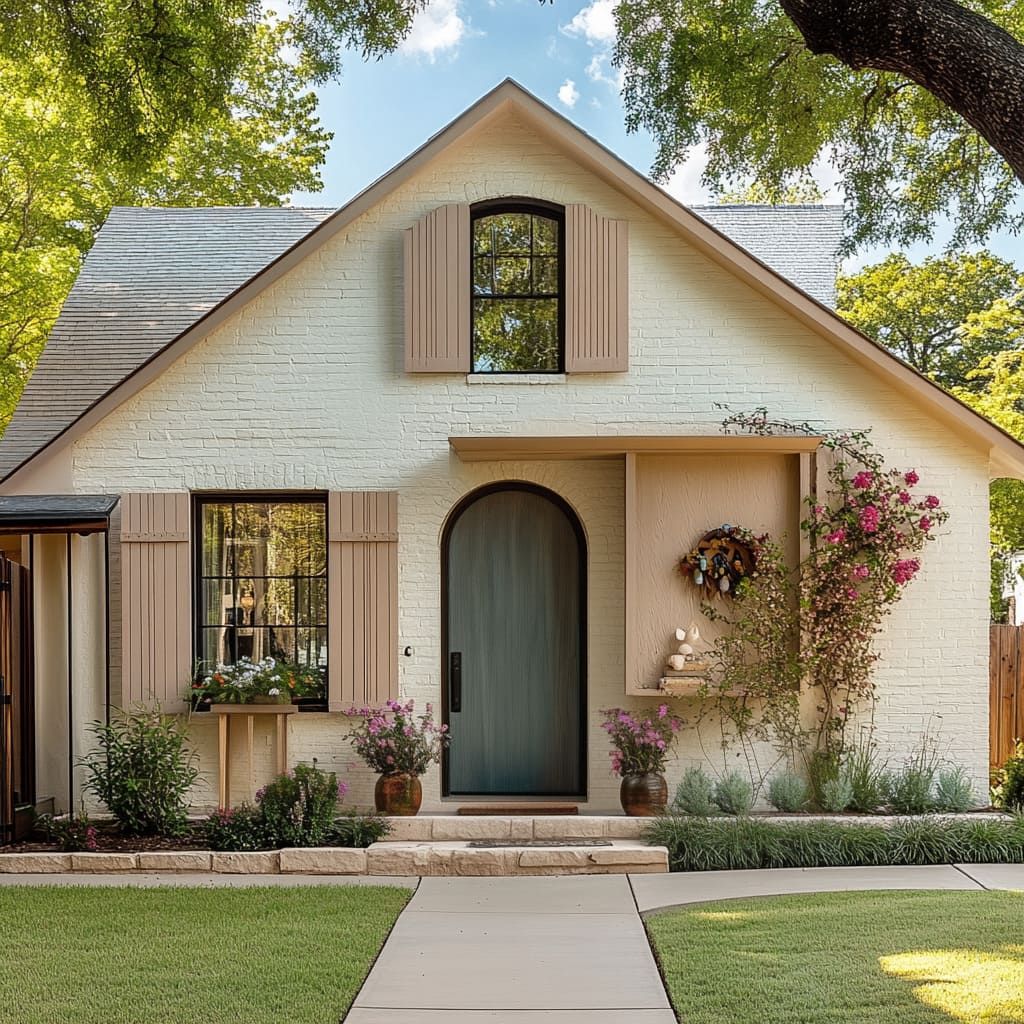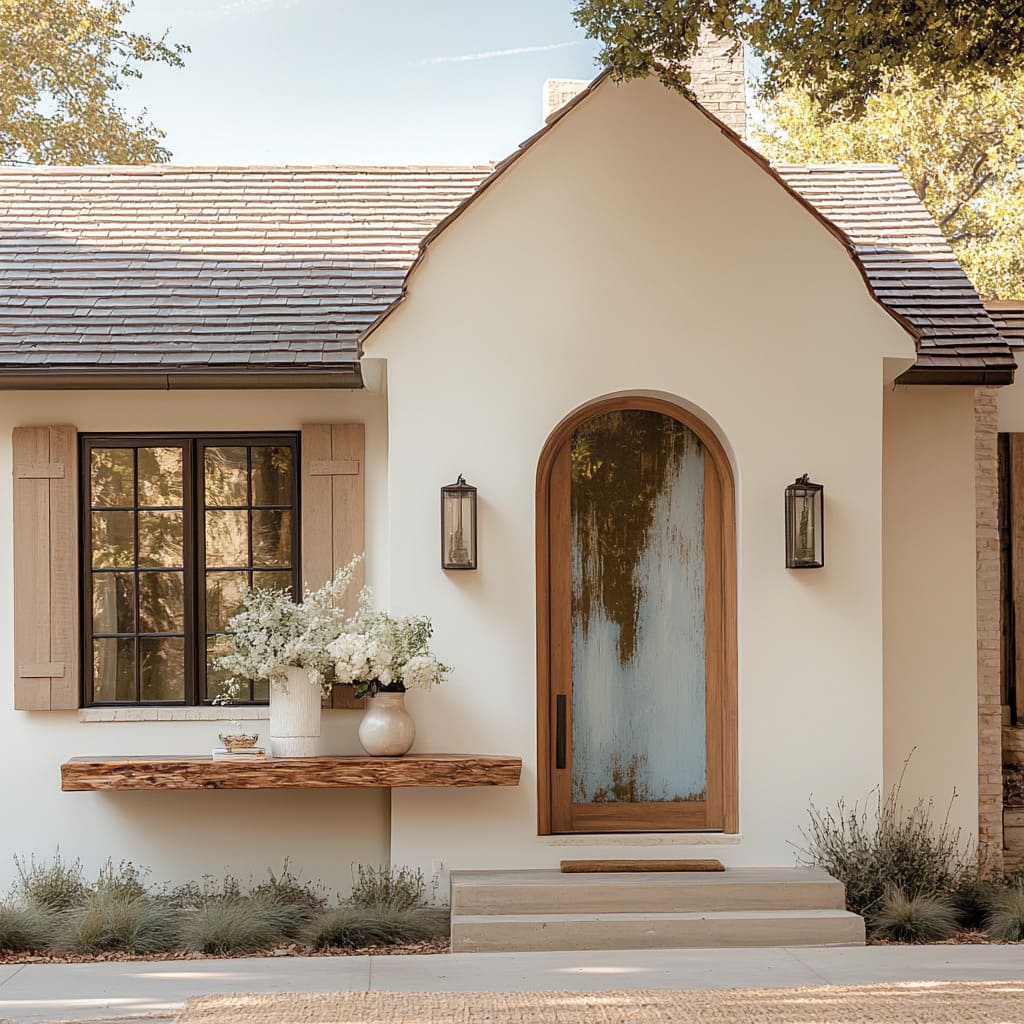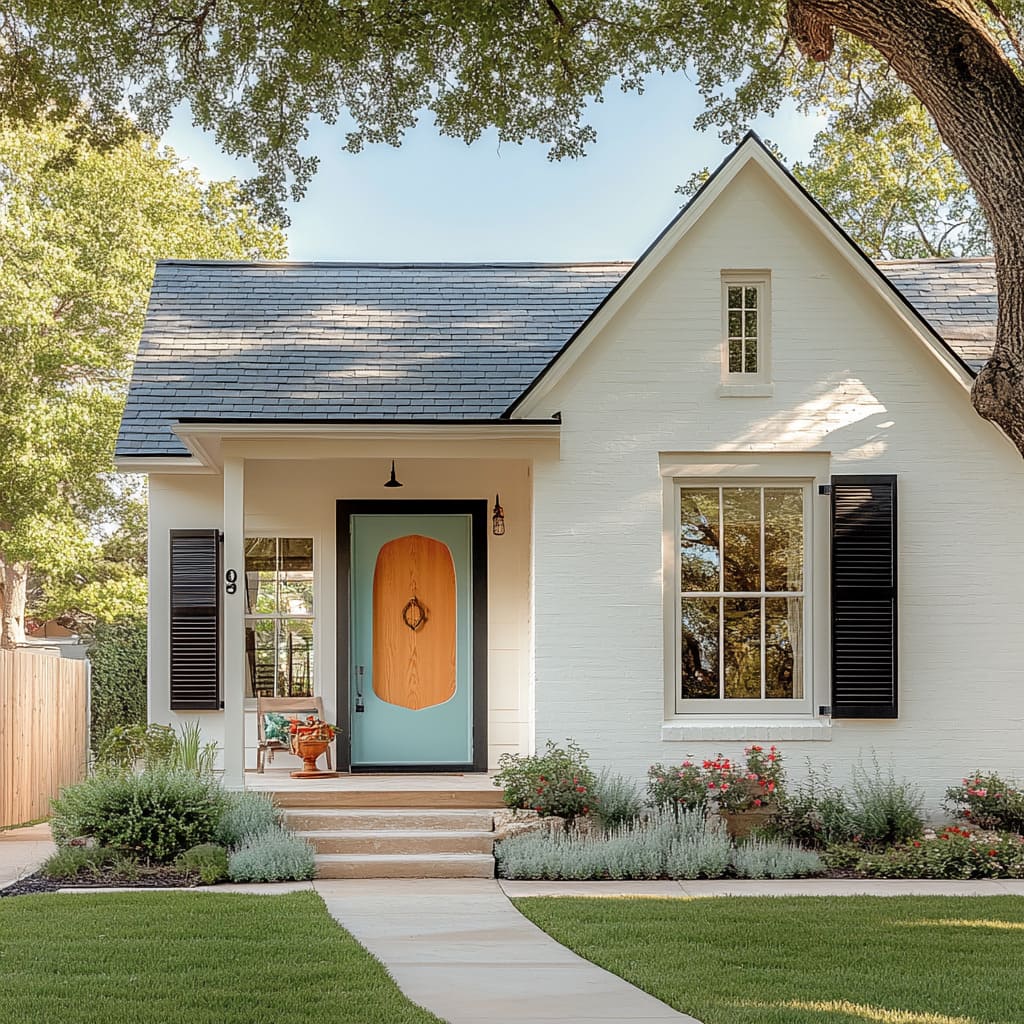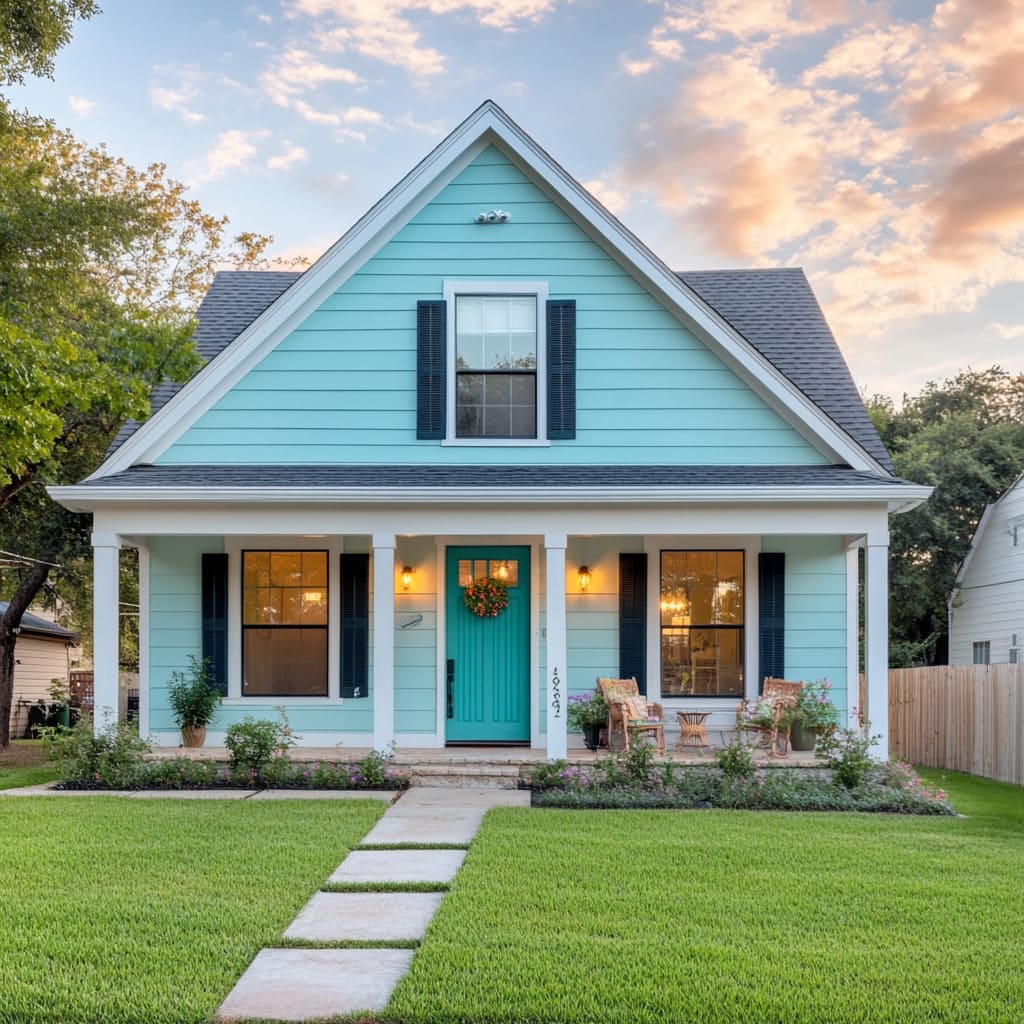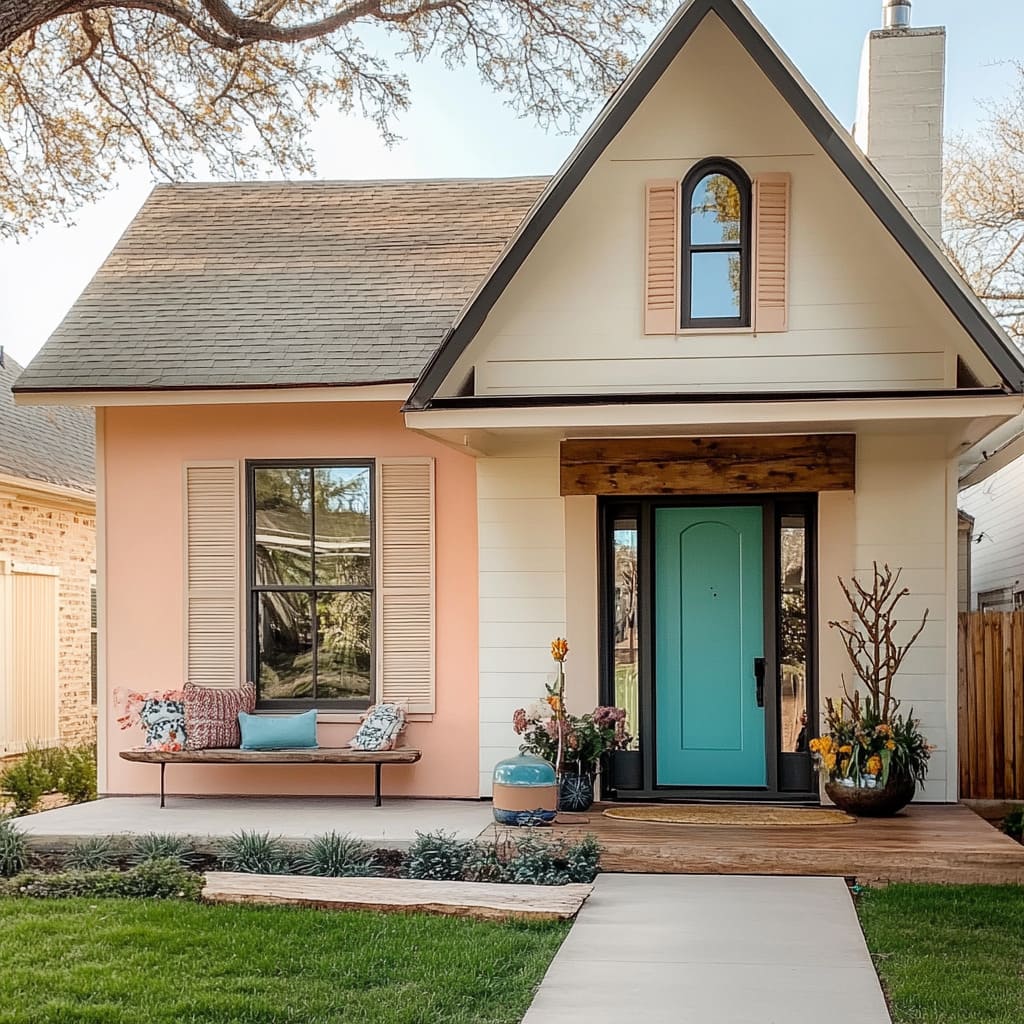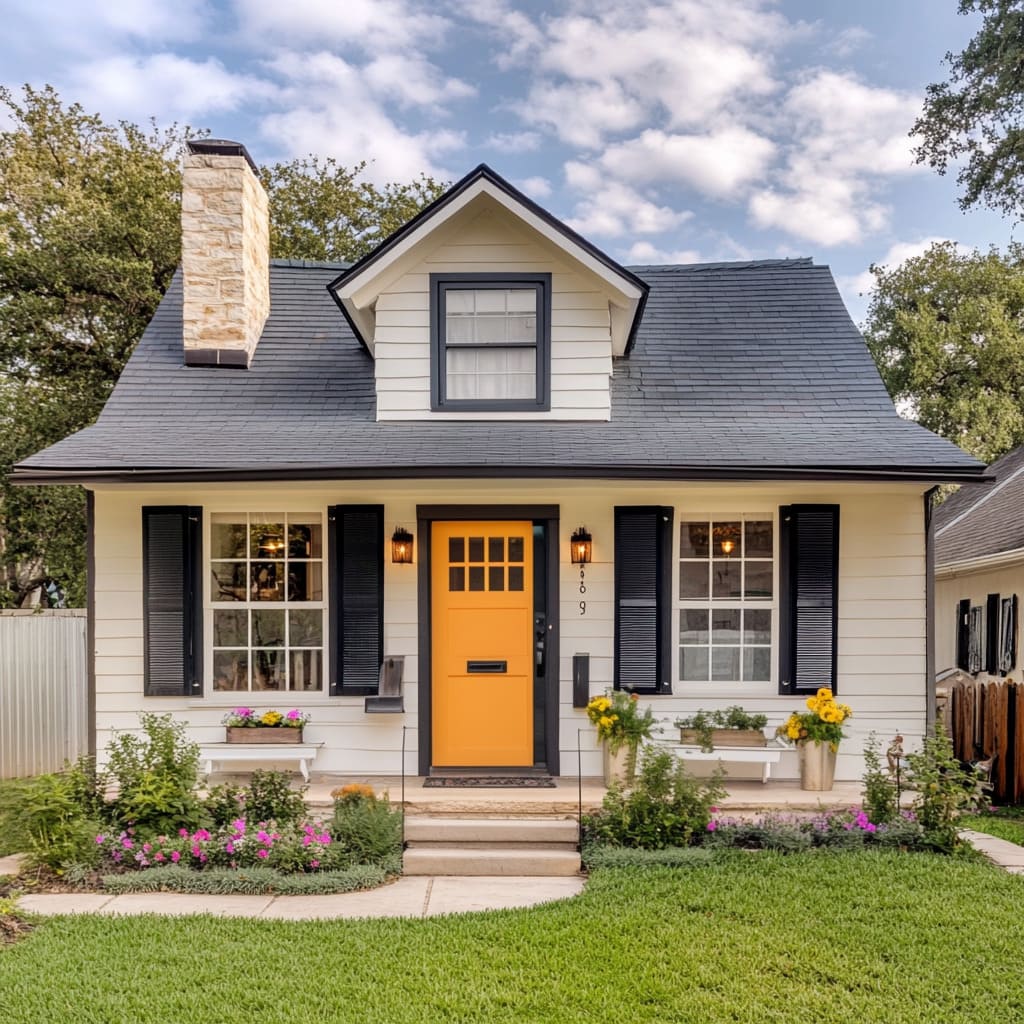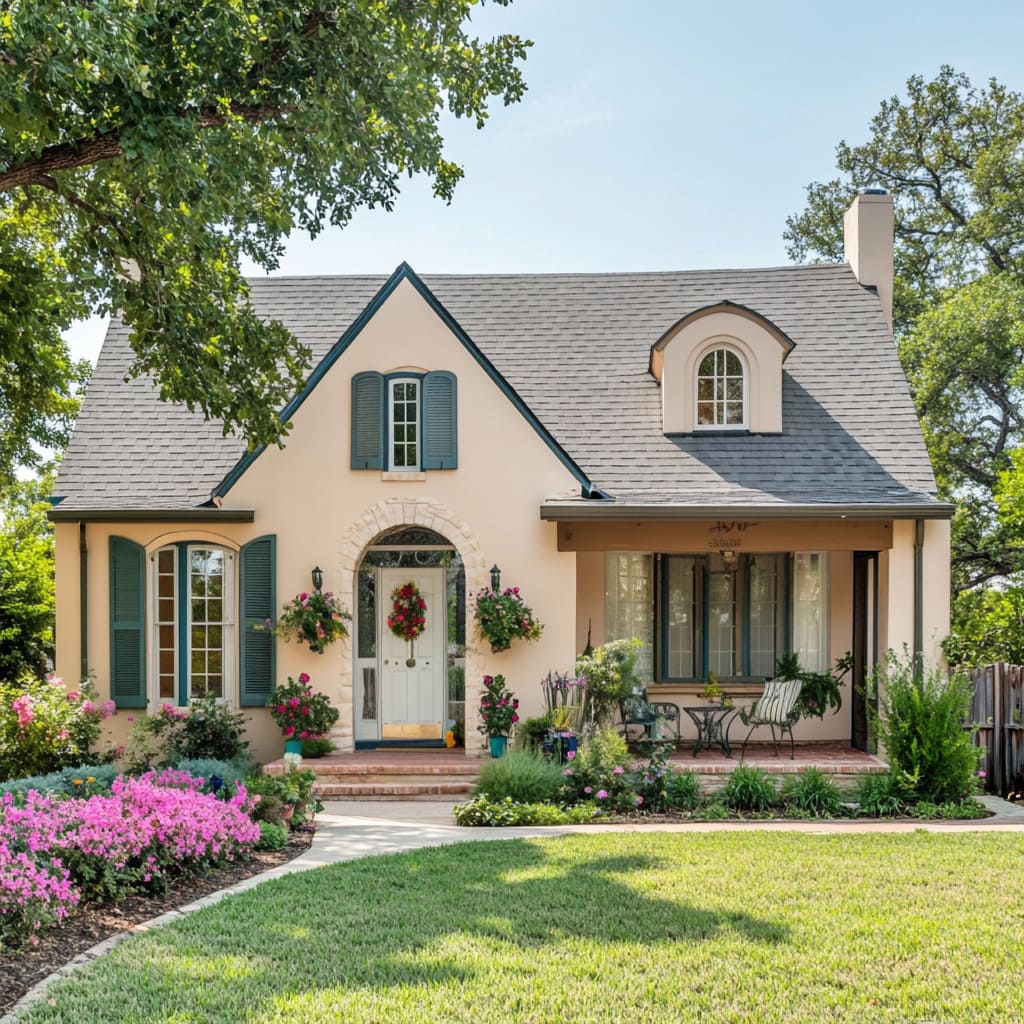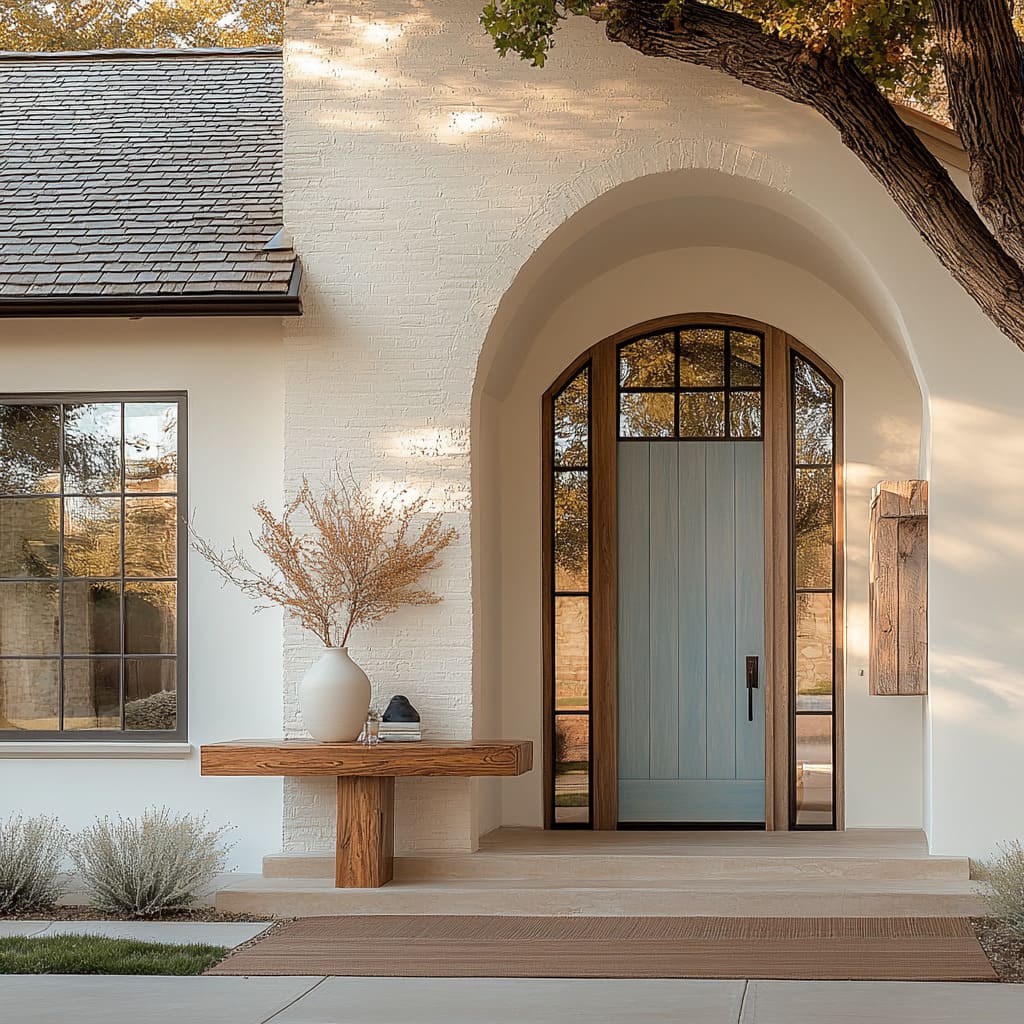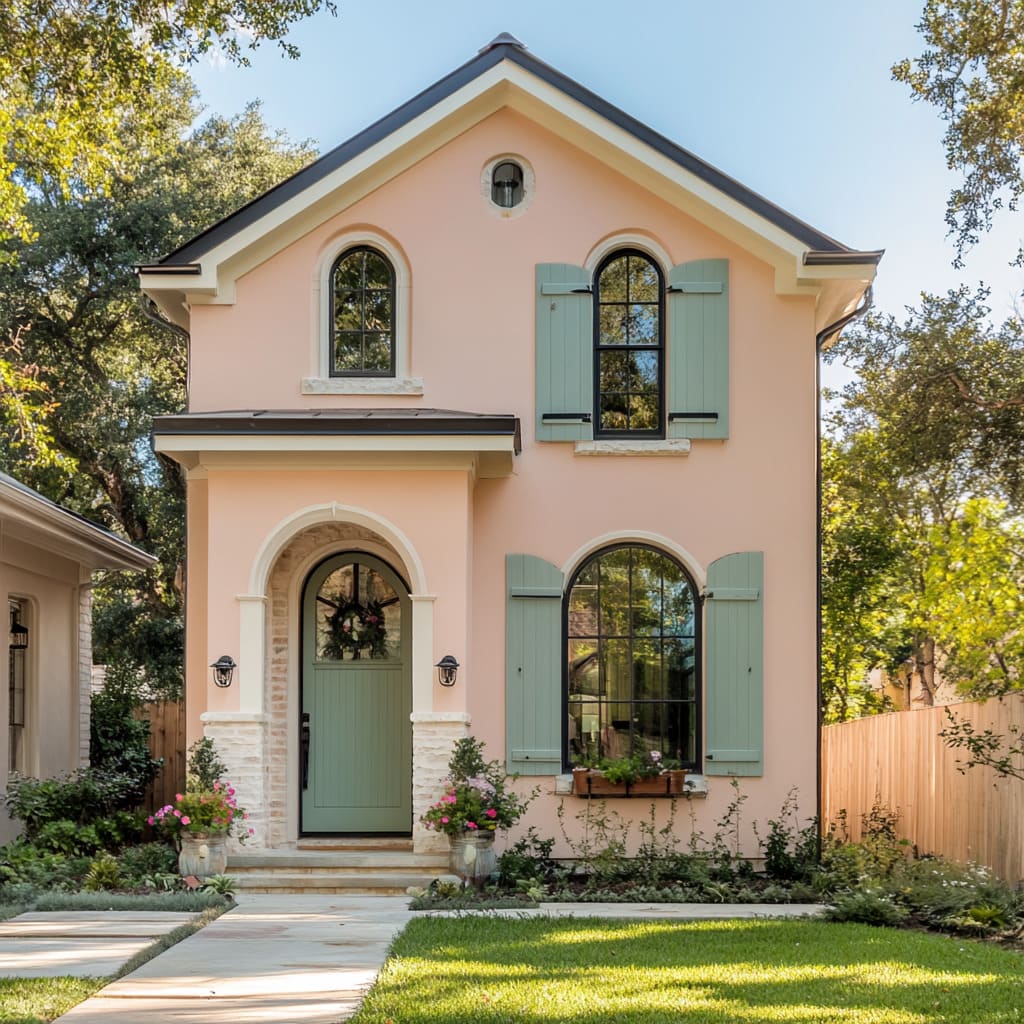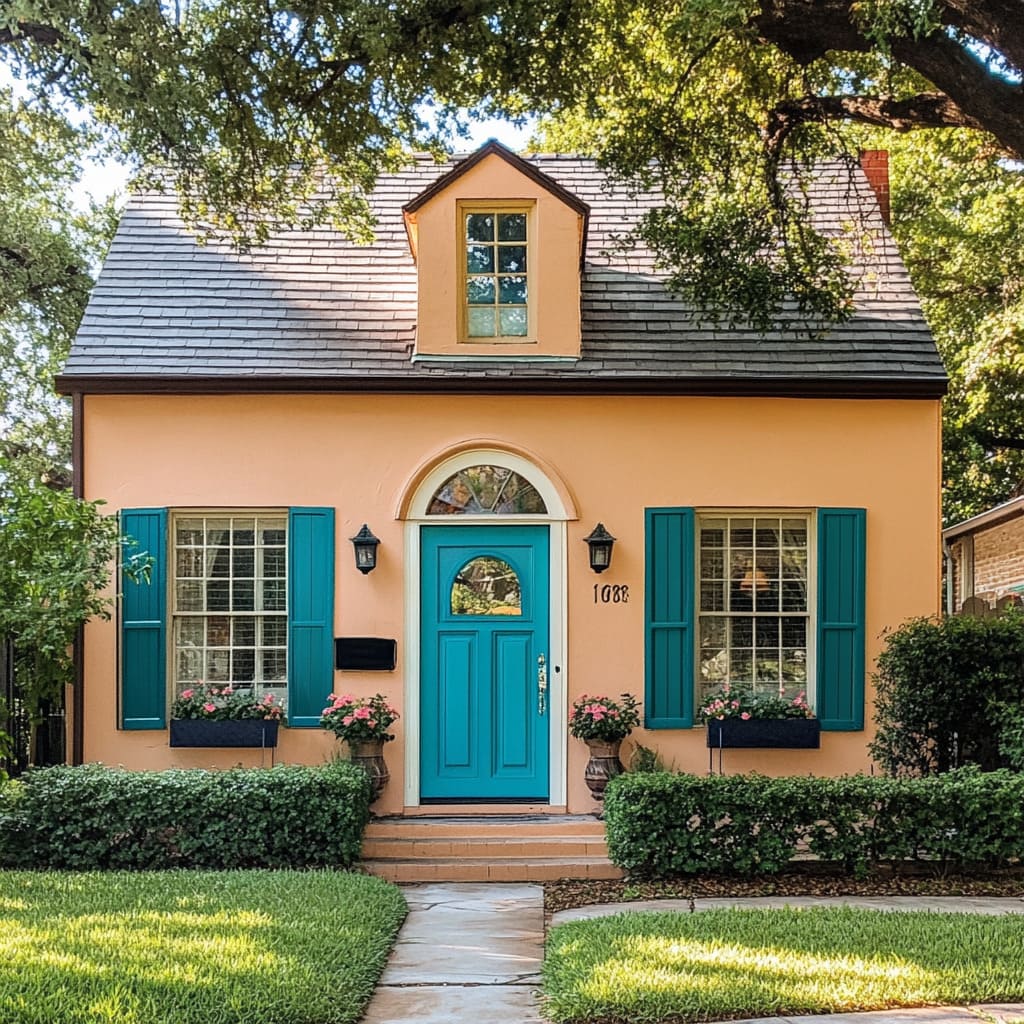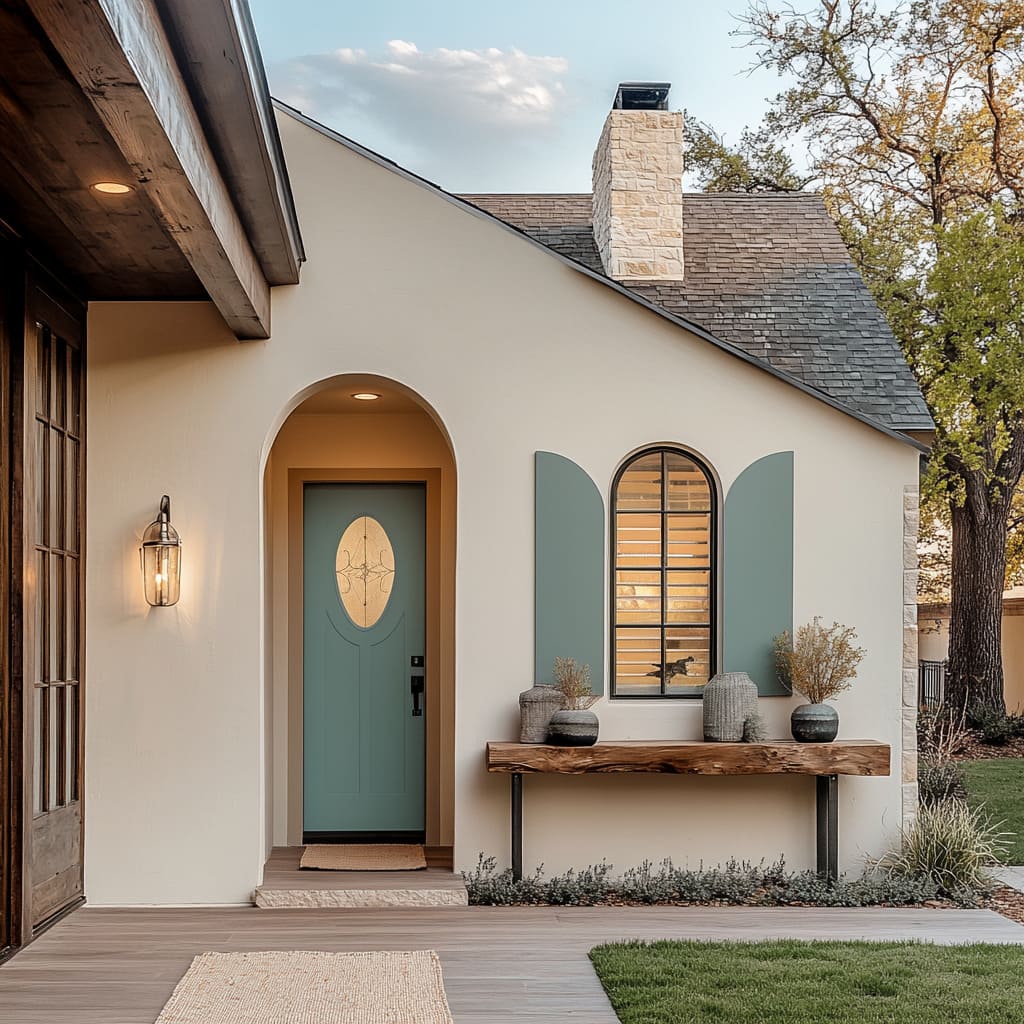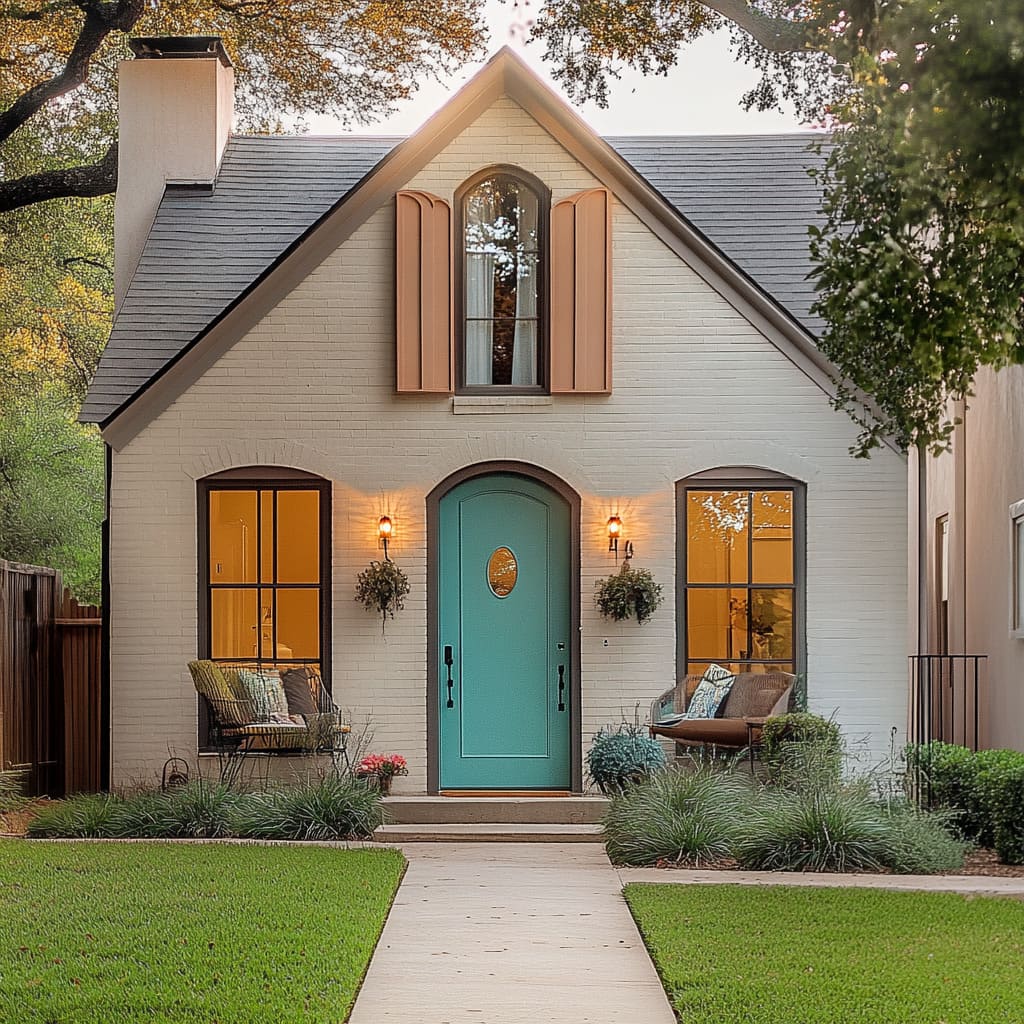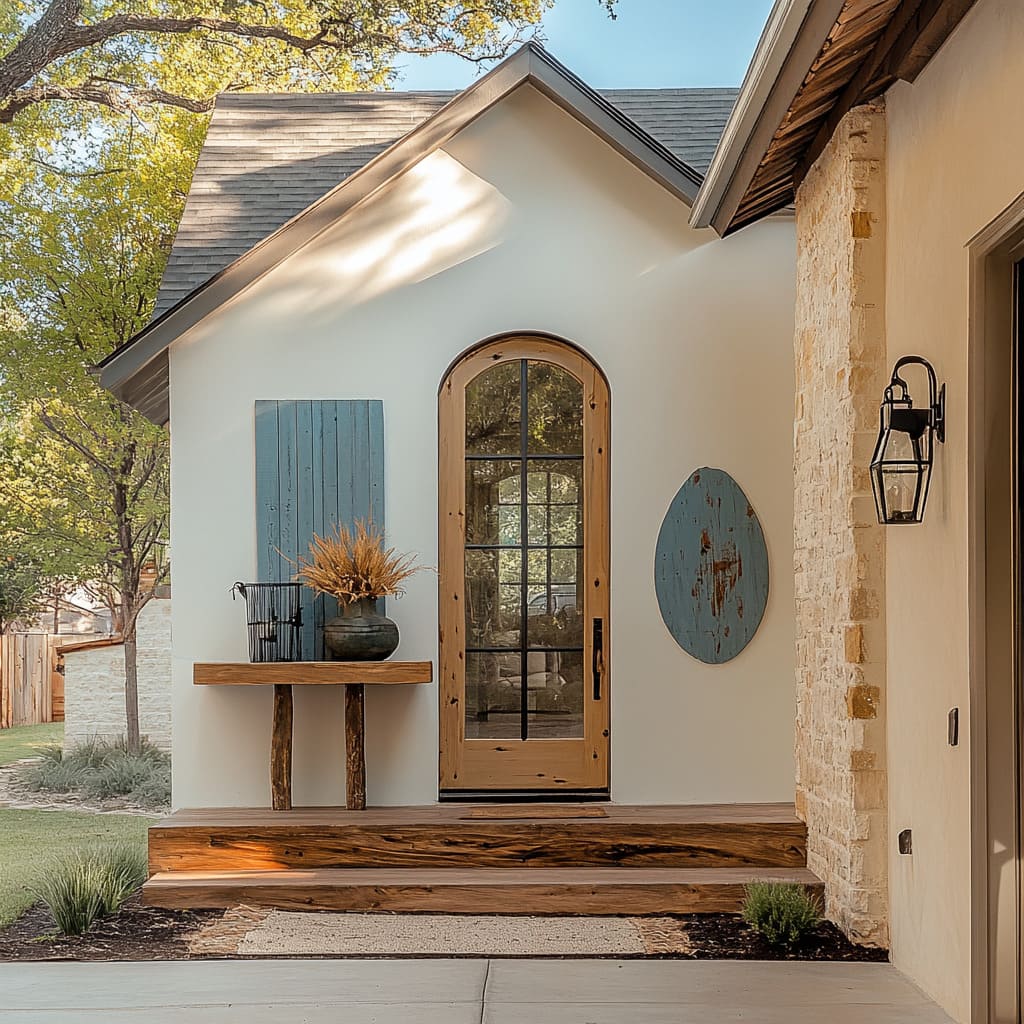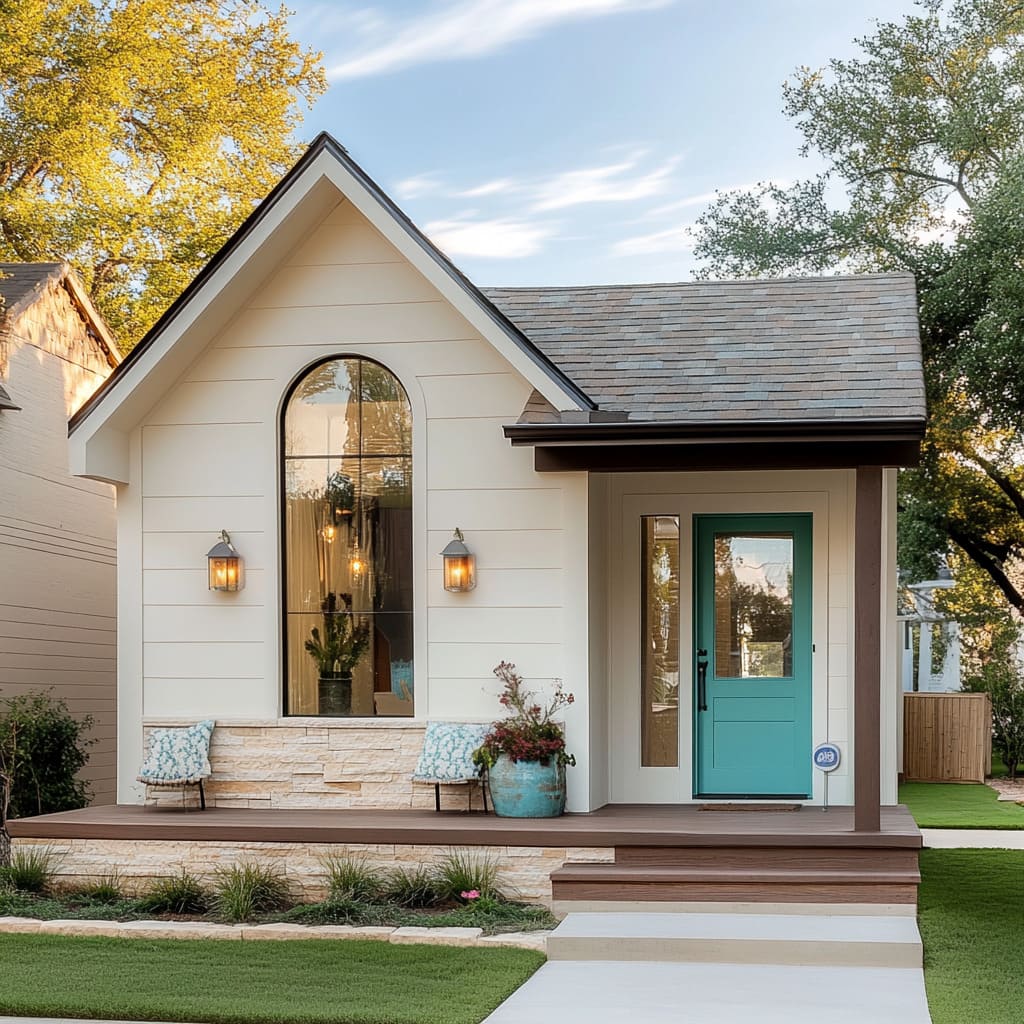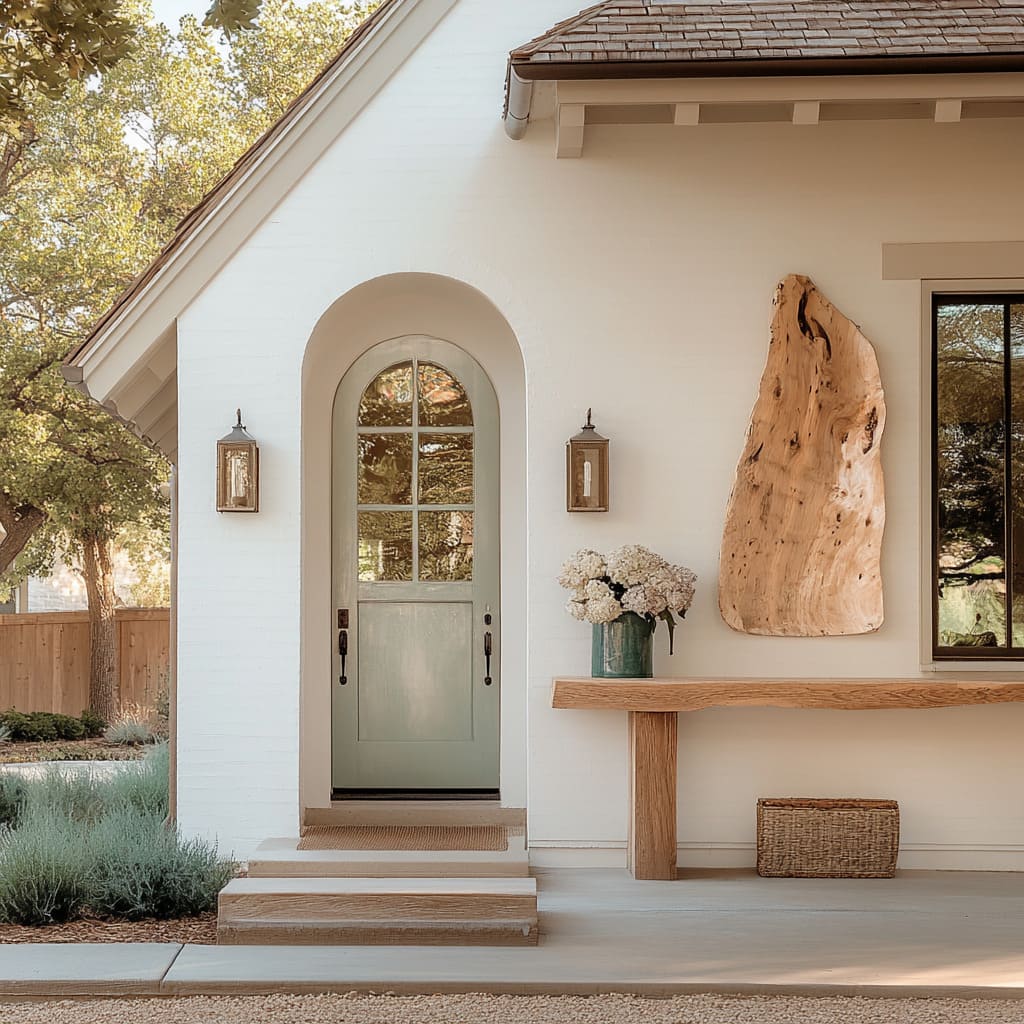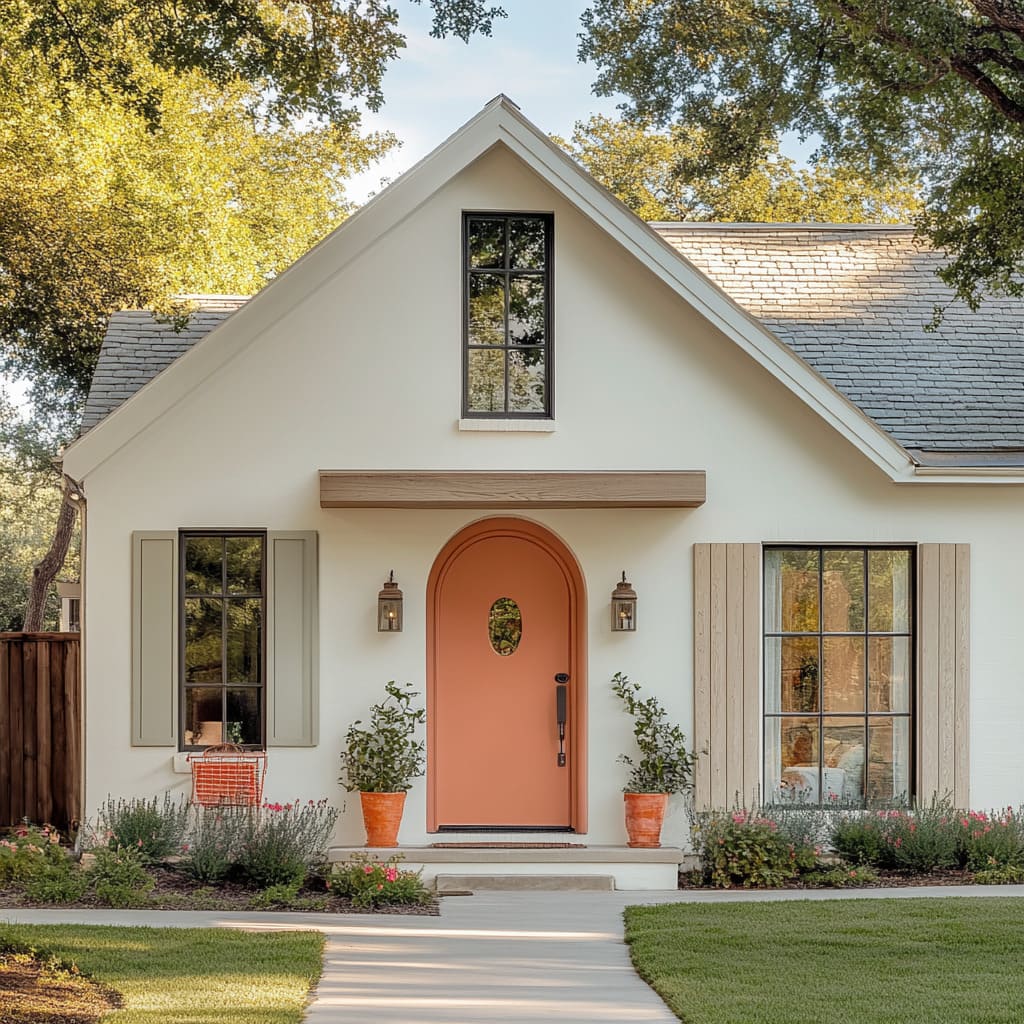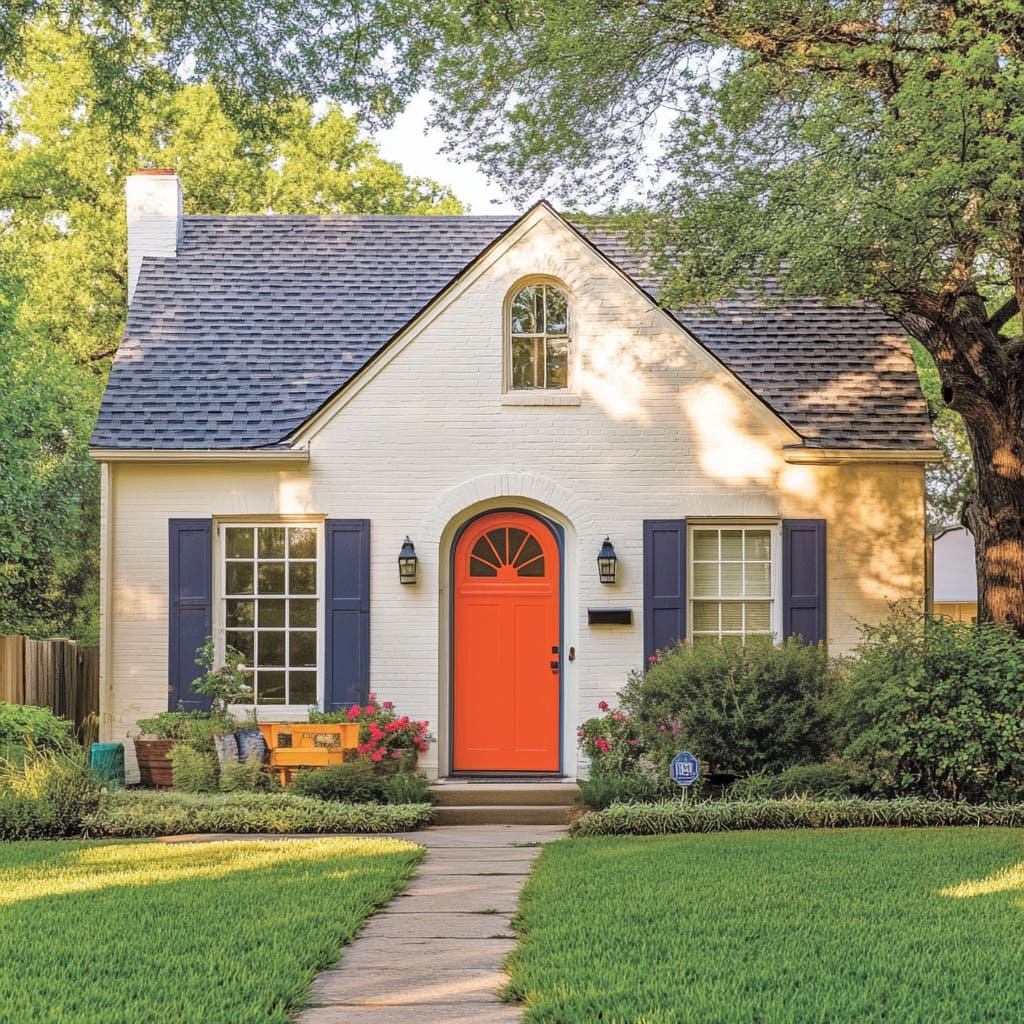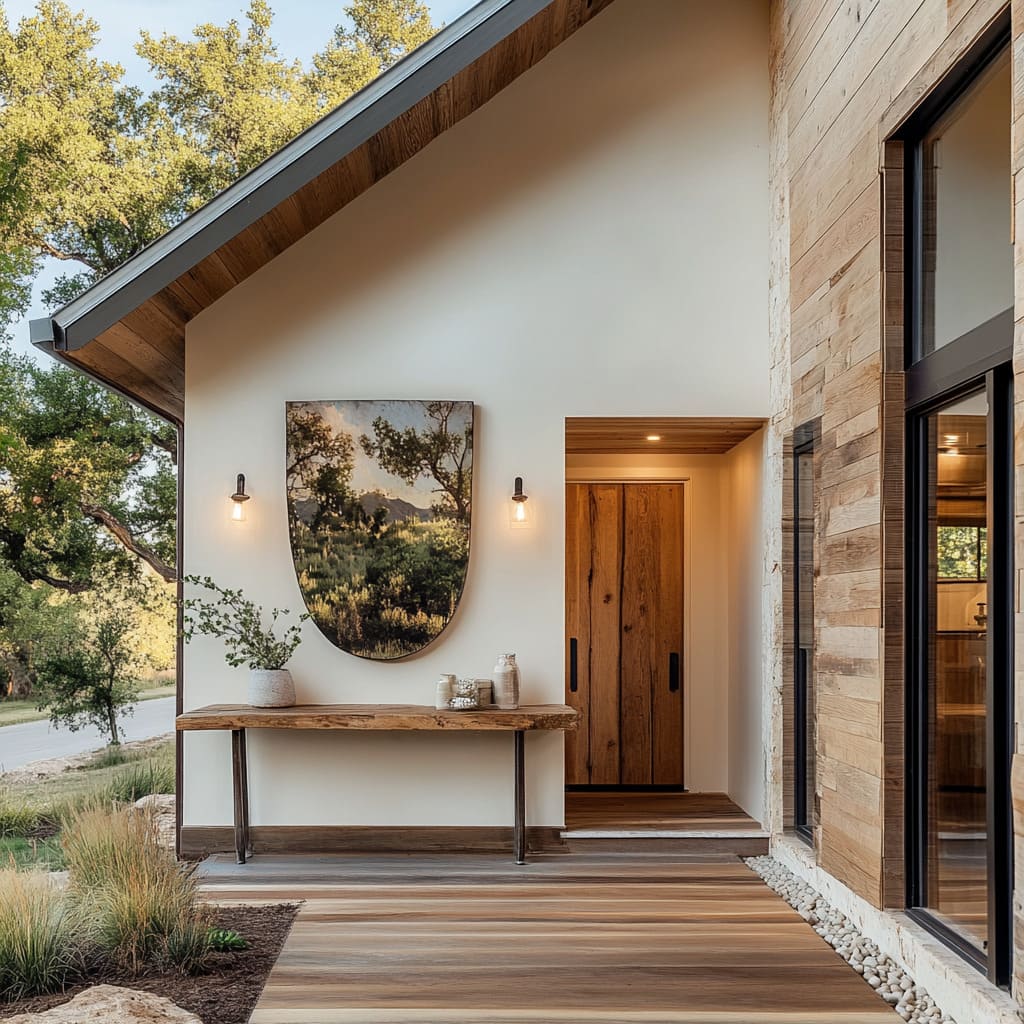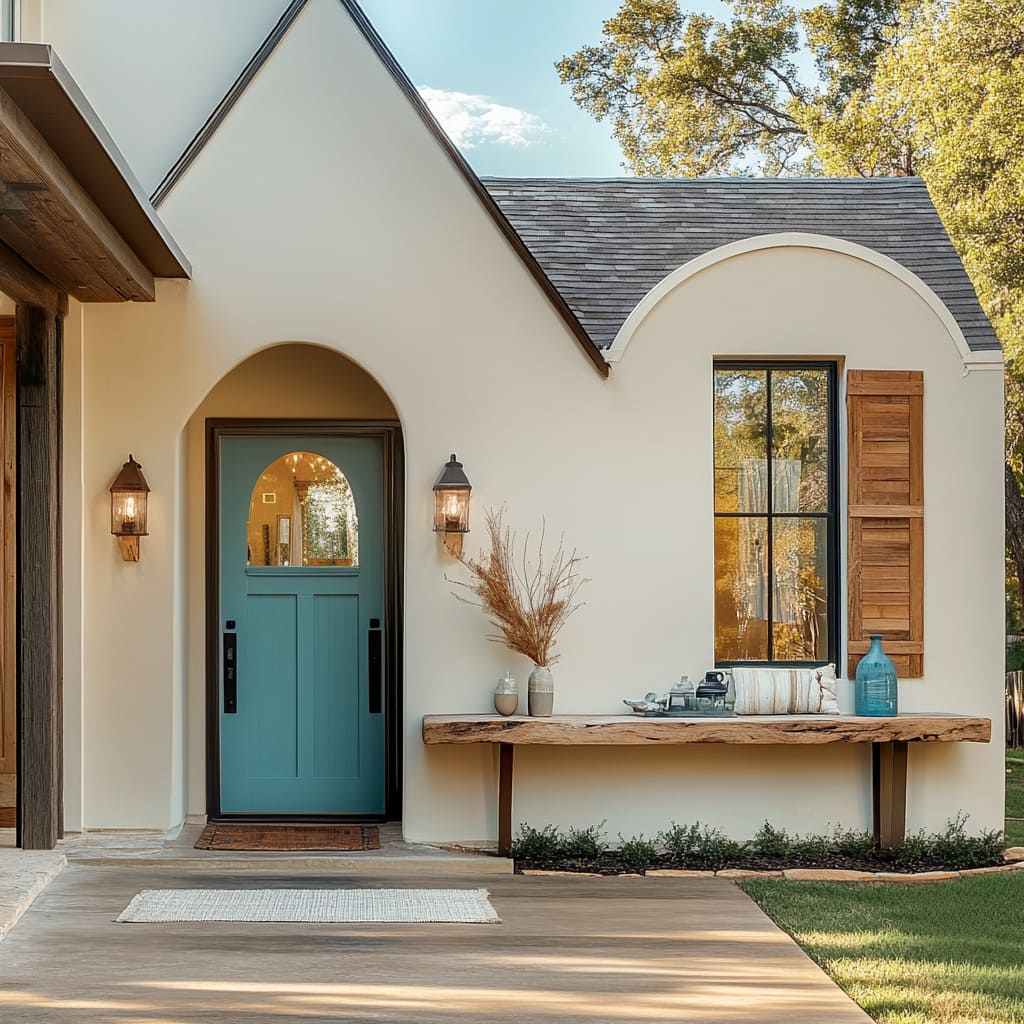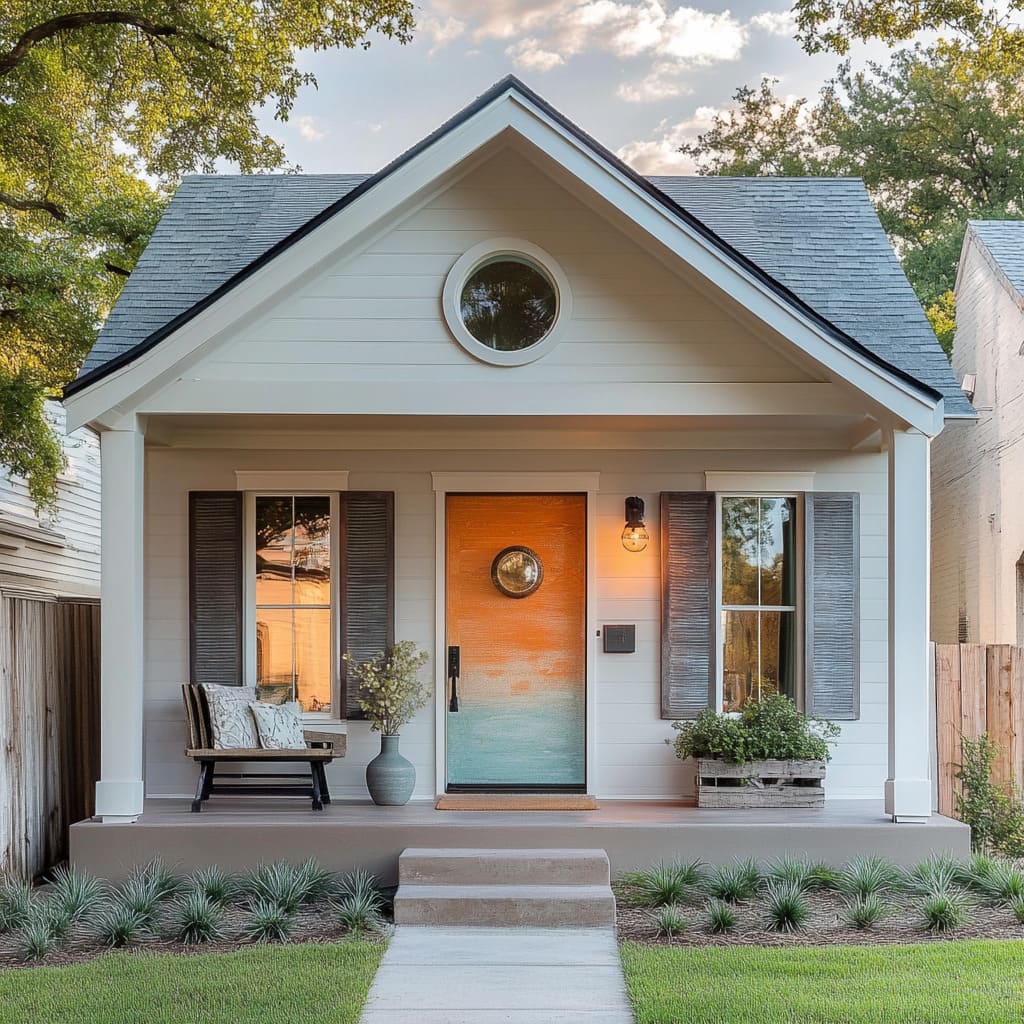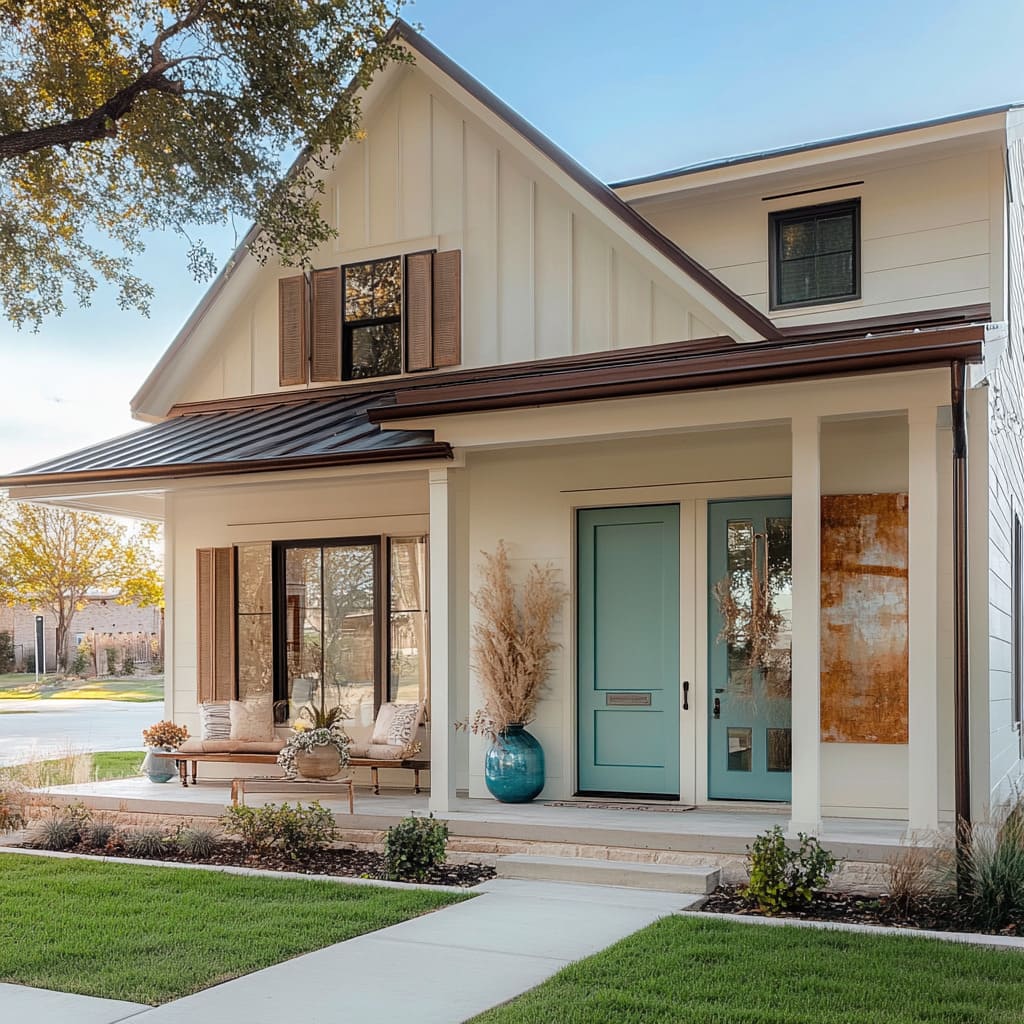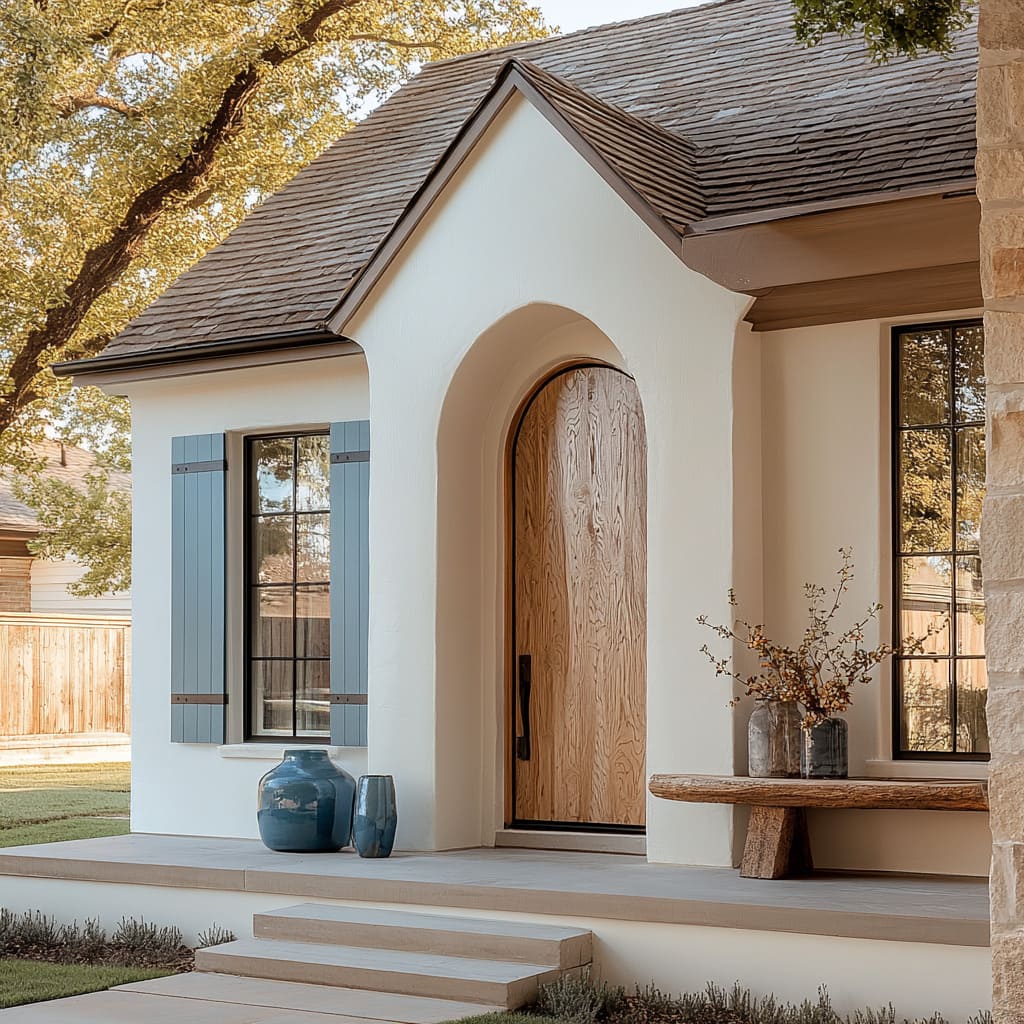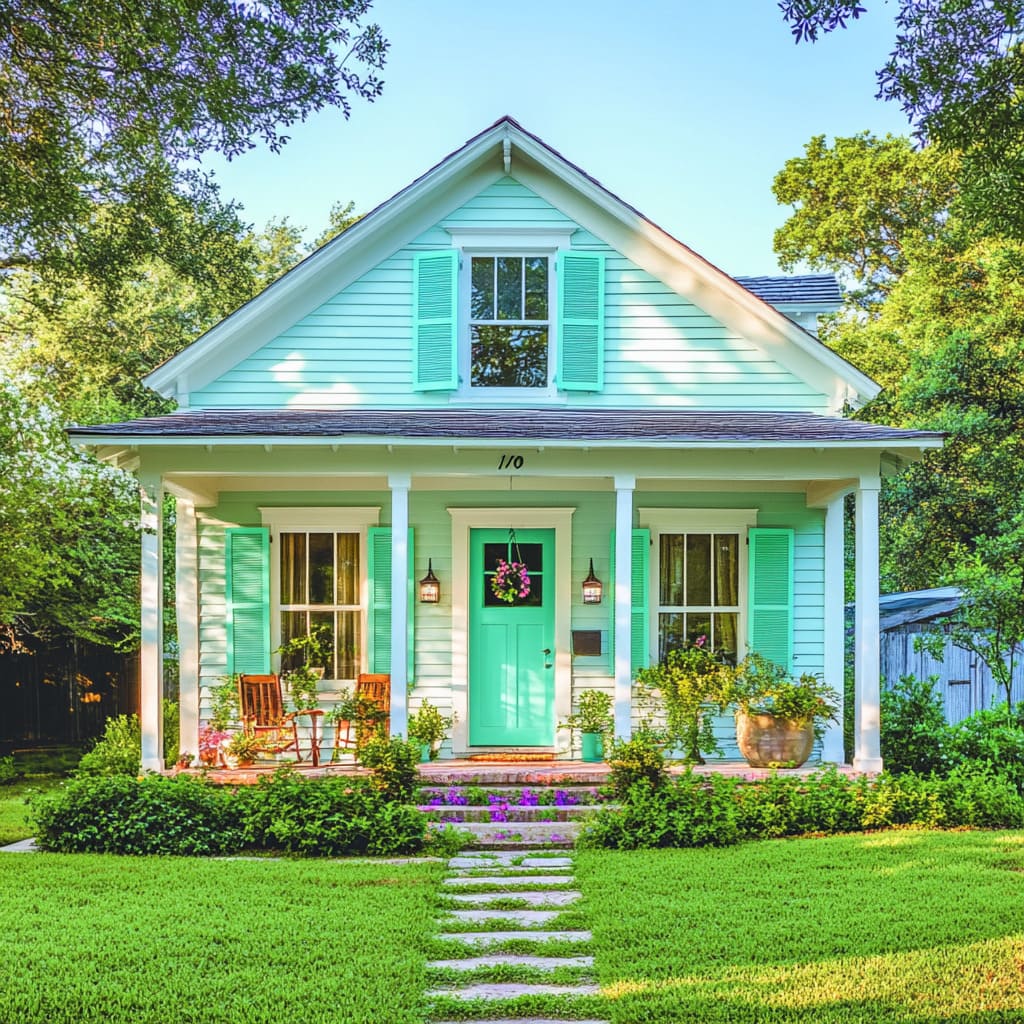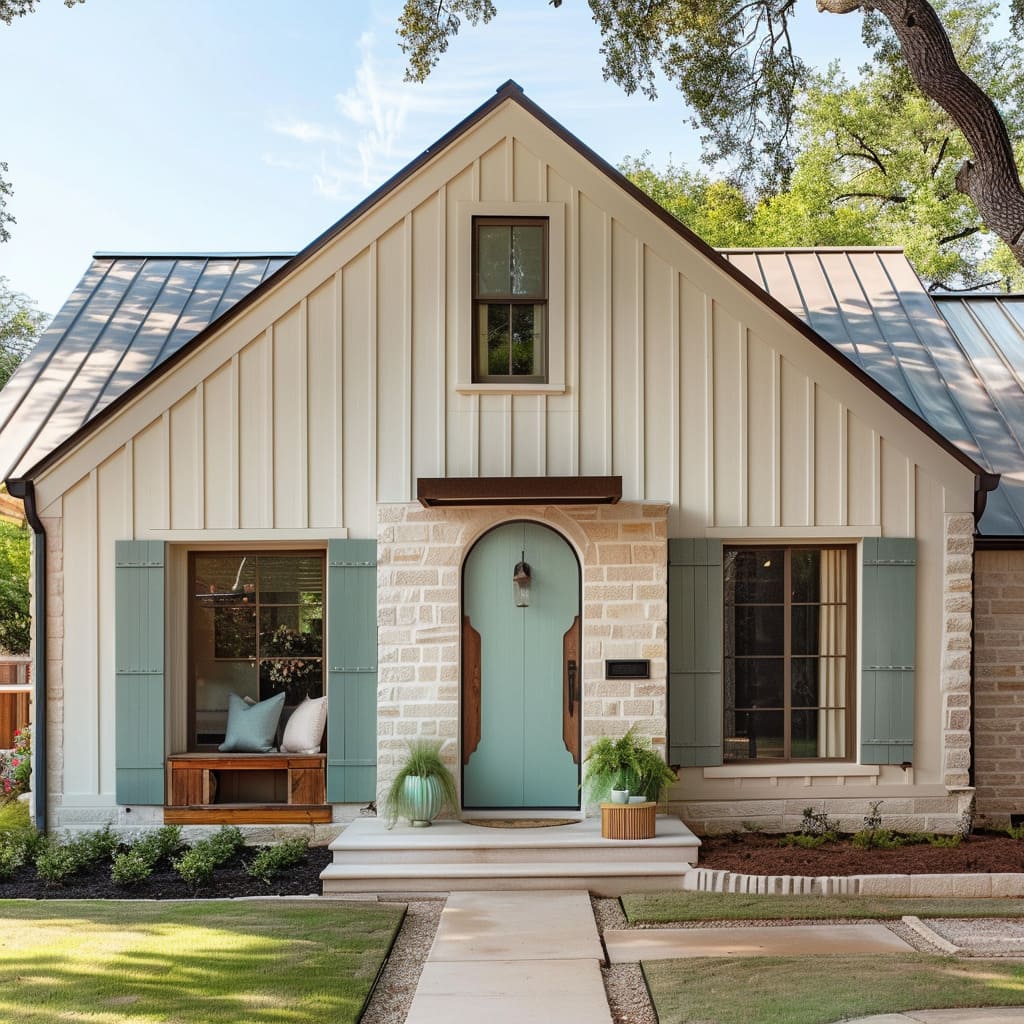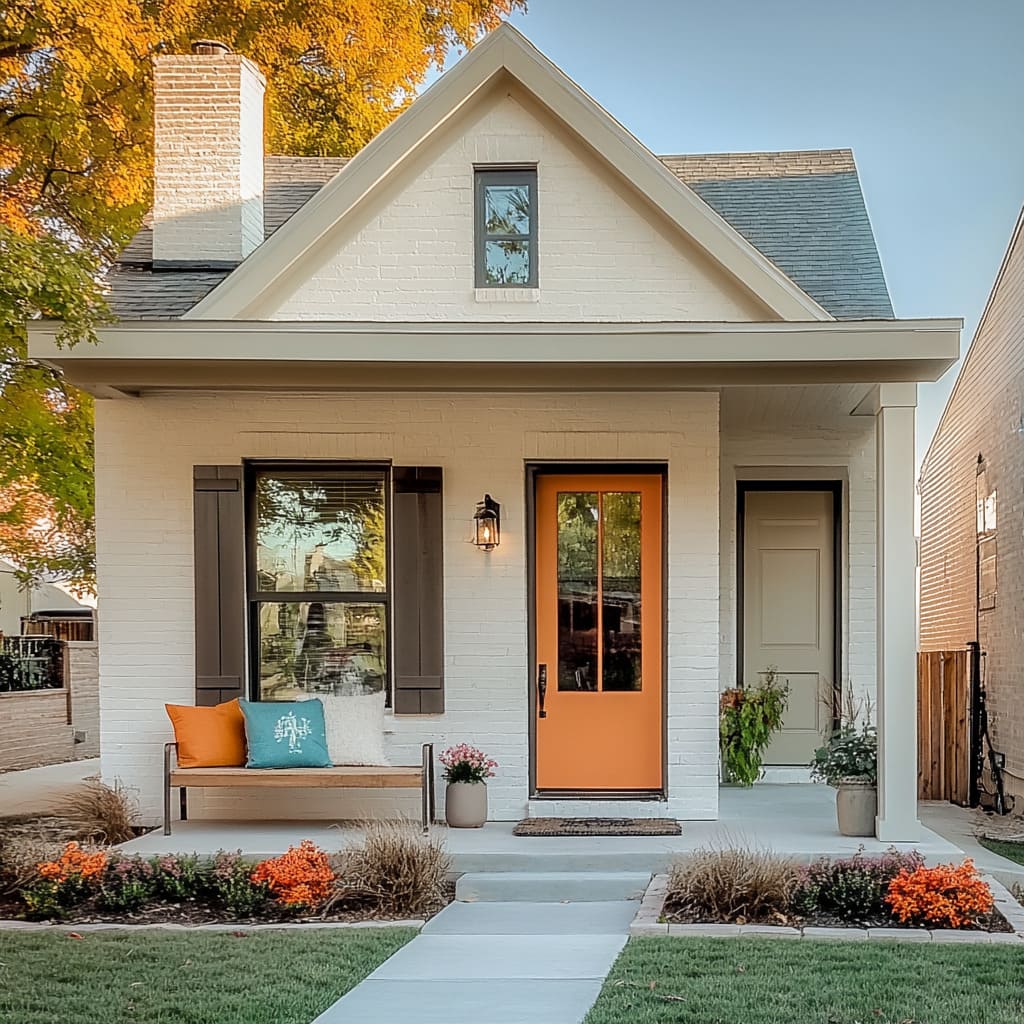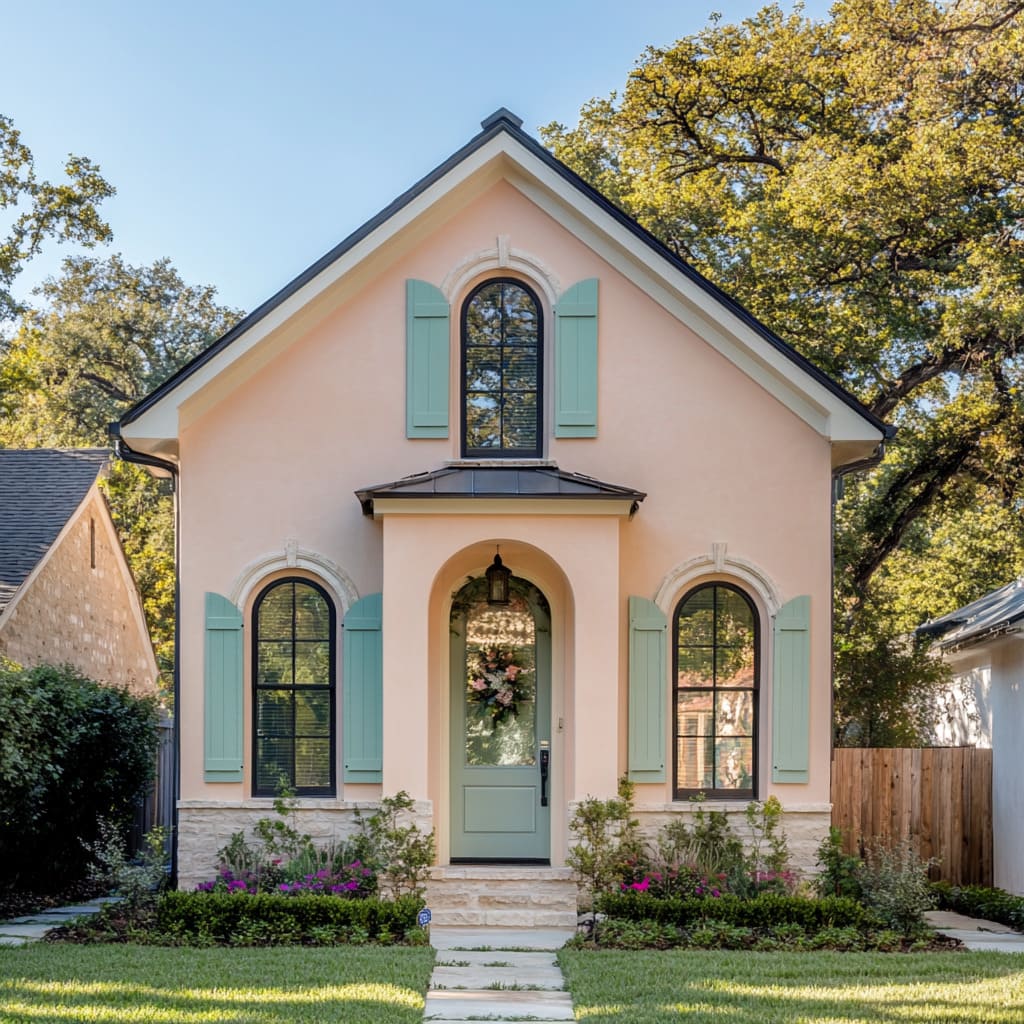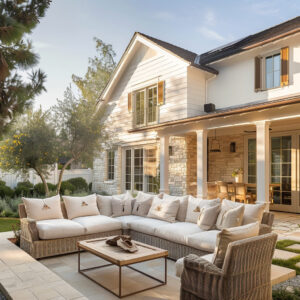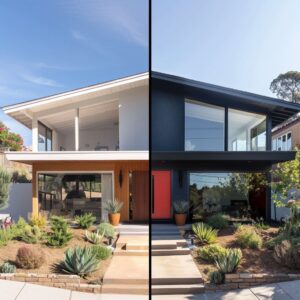Transforming a home into a farmhouse dream is more than just a design choice—it’s about creating a space that feels warm, inviting, and connected to the simpler pleasures of life. The farmhouse style, with its roots in rural living, combines the best of both worlds: the cozy comfort of a rustic setting and the clean lines and functionality of modern design.
This approach to home design offers a unique blend of old and new, where natural materials, muted colors, and thoughtful details come together to create a space that feels both timeless and fresh
The appeal of the farmhouse style lies in its ability to make any home feel welcoming. It draws on traditional elements like wooden beams, stonework, and metal accents, which are often paired with contemporary features such as large windows, sleek finishes, and open spaces.
This combination allows homeowners to enjoy the charm of a rustic environment without sacrificing modern comforts. Farmhouse design is about creating a sense of balance—between old and new, rough and polished, simple and sophisticated.
It’s a style that adapts to different tastes and preferences, making it perfect for those who want a home that reflects both comfort and style
In this article, we’ll explore how to transform your home into a farmhouse dream by focusing on several key elements. We’ll begin with a look at color palettes that capture the essence of farmhouse living, from neutral tones that create a calm backdrop to bolder shades that add character and warmth.
Next, we’ll discuss the materials that define the farmhouse style, such as reclaimed wood, stone, and metal, and how these can be used to enhance both the interior and exterior of your home. We will also delve into architectural features that add to the farmhouse charm, including roof designs, window styles, and entryway details that make a lasting impression.
Finally, we’ll cover decorative elements that complete the look, from cozy textiles and vintage accessories to thoughtful landscaping choices that enhance curb appeal
Defining the Farmhouse Style
The farmhouse style has deep roots in the rural traditions of early America and Europe, where homes were built for practicality and durability. Originally, farmhouses were simple, functional structures designed to meet the needs of hardworking families.
The style was shaped by the resources available at the time—wood from nearby forests, stone from local quarries, and handmade bricks. These materials were chosen for their availability and durability, lending a rustic, unpretentious quality to the architecture
Over time, the farmhouse style has evolved, incorporating influences from different regions and periods. In the early 20th century, the Industrial Revolution introduced new materials and building techniques, which began to blend with traditional farmhouse elements.
This fusion of old and new continued throughout the decades, with mid-century modern and contemporary styles further influencing the aesthetic. Today, the farmhouse style is celebrated not only for its historical significance but also for its ability to adapt to modern living.
It remains popular for its focus on comfort, simplicity, and a connection to nature
Key Characteristics
At its core, the farmhouse style is defined by a few key characteristics that make it instantly recognizable yet versatile enough to suit a variety of tastes. Simplicity is one of the hallmarks of farmhouse design.
This style embraces clean lines and uncluttered spaces, often featuring open floor plans that allow for easy movement and a sense of spaciousness. The simplicity of the design is intentional, reflecting the practical, no-frills mindset of rural life.
Functionality is another important aspect of farmhouse style. Every element in a farmhouse home serves a purpose, whether it’s a sturdy wooden table that doubles as a workspace or a built-in bench that offers extra storage.
The focus is on creating a home that is both beautiful and practical, with furnishings and fixtures that stand up to daily use while still contributing to the overall aesthetic
The farmhouse style also thrives on a blend of rustic and contemporary features. Natural materials like wood, stone, and brick are often paired with more modern elements such as stainless steel, glass, and polished concrete.
This mix of textures and finishes adds depth and interest to the design, creating a space that feels layered and lived-in. Reclaimed wood beams might share a room with sleek, minimalist lighting, while a rough-hewn stone fireplace could be complemented by modern furniture with clean lines.
This contrast is what gives the farmhouse style its unique appeal—a space that feels both grounded in tradition and open to modern influences
Finally, the farmhouse style is deeply connected to nature. Large windows, natural light, and the use of organic materials all help to blur the line between indoor and outdoor living.
This connection to nature is not just about aesthetics; it’s about creating a home that feels in harmony with its surroundings, a space where natural beauty is brought inside to enhance everyday living. By understanding these foundational elements of farmhouse style, homeowners can begin to incorporate the look into their own spaces.
Whether it’s through color choices, material selections, or thoughtful decorative touches, the goal is to create a home that feels both cozy and stylish—a true farmhouse dream
Creating a Farmhouse-Inspired Color Scheme
Designing a color scheme for a farmhouse-inspired home involves a careful balance of subtle, calming shades and vibrant, unexpected tones. The right color palette can set the stage for a cozy and welcoming environment while also allowing room for personal expression and creativity.
Farmhouse style thrives on this delicate balance, blending classic, neutral foundations with bold accents to create spaces that are both restful and visually intriguing
Foundational Colors
At the heart of any farmhouse color scheme are neutral tones that create a soft, inviting foundation. Soft whites, warm greys, and beige are often the go-to choices for walls, ceilings, and large furnishings.
These colors provide a versatile backdrop that can complement a variety of decor styles and personal tastes. Soft whites, in particular, are perfect for reflecting natural light, making rooms feel brighter and more spacious.
Warm greys add a sense of depth and coziness, while beige brings warmth and a touch of rustic charm. Using these neutrals as a base allows other elements of the home to shine.
For example, a soft white or warm grey wall can highlight the natural beauty of wooden beams, stone fireplaces, or rustic furniture. Neutral colors also create a sense of calm and tranquility, making them ideal for living rooms, bedrooms, and other areas where comfort and relaxation are paramount.
By choosing a palette of soft, muted tones, homeowners can craft spaces that feel both timeless and adaptable, easily accommodating different styles and personal preferences
Pops of Color and Unexpected Combinations
While neutrals form the base of a farmhouse color palette, adding pops of color can inject personality and vibrancy into the design. Think of deep blues, mustard yellows, or rich greens as accent colors that can be used in various ways to enhance the overall look.
These bolder hues can be introduced through furniture, cabinetry, textiles, or even statement walls, creating focal points that draw the eye and add character to the space. Experimenting with unexpected color combinations can also bring a modern twist to the traditional farmhouse aesthetic.
For example, pairing deep navy blue with crisp white creates a striking contrast that feels both classic and fresh. Mustard yellow accents can add warmth and energy, particularly when used in combination with cool greys or muted greens.
Rich greens, such as olive or sage, provide a soothing yet dynamic touch, especially when balanced with natural wood tones or soft beige. One creative way to introduce these colors is through techniques like color blocking or ombre effects.
A front door painted with a gradient of warm tones transitioning into cool shades can serve as a standout feature, blending seamlessly with both the interior and exterior design. Similarly, color blocking on walls or furniture can break up the monotony of a single color and add depth to a room.
These techniques allow for a playful approach to color, encouraging homeowners to express their unique style within the framework of farmhouse design
Balancing Warm and Cool Tones
Achieving a cohesive farmhouse color scheme is about more than just selecting individual colors; it also involves balancing warm and cool tones to create a harmonious and engaging environment. Warm tones, such as earthy reds, terracotta, and soft yellows, can make a space feel inviting and comfortable, while cool tones like blues, greens, and greys provide a calming, refreshing contrast.
The key is to mix these tones thoughtfully, ensuring that one does not overpower the other
For instance, a room with predominantly warm tones, like a beige wall with a wooden ceiling beam, can be balanced with cool-toned accessories, such as blue cushions or a green area rug. Alternatively, a cool-toned space with grey walls and metal accents can be warmed up with touches of soft yellow or rich brown through furniture or decorative pieces.
This interplay between warm and cool tones keeps the eye moving and maintains a dynamic visual balance, preventing the space from feeling too flat or one-dimensional. To maintain harmony without sacrificing interest, consider using a primary color as a dominant shade and then layering in complementary hues as accents.
For example, a soft grey living room can be accented with mustard yellow throws and navy blue pillows, creating a balanced yet vibrant space. By carefully selecting and combining colors, homeowners can create a farmhouse-inspired look that feels both cohesive and full of life
Innovative Use of Materials for a Farmhouse Feel
Materials play a crucial role in defining the farmhouse aesthetic. The right combination of textures and finishes can elevate the style from simply rustic to thoughtfully curated, blending old-world charm with contemporary sensibilities.
The goal is to create a space that feels grounded and natural, with each material choice contributing to the overall warmth and character of the home
Mixing Natural with Industrial
A modern approach to farmhouse design often involves blending natural materials with industrial elements. This juxtaposition creates a fresh, updated look while retaining the rustic charm that defines the style.
Think of pairing reclaimed wood beams with sleek metal fixtures, or combining a stone fireplace with a concrete floor. These contrasting materials work together to add depth and interest to a room, merging the rough with the refined.
For example, a kitchen might feature wooden cabinetry paired with stainless steel appliances, or a dining room could showcase a rough-hewn wooden table set against a backdrop of exposed brick walls. The addition of metal accents, such as iron light fixtures or steel-framed windows, can further enhance the industrial edge, adding a touch of modernity without detracting from the overall farmhouse feel.
This blend of materials creates a dynamic visual contrast that is both functional and aesthetically pleasing
Repurposing and Upcycling
Incorporating repurposed or upcycled materials is a hallmark of the farmhouse style, adding authenticity and character without a hefty price tag. Using reclaimed wood for flooring, furniture, or accent walls is a popular choice, as it brings a sense of history and uniqueness to a space.
Salvaged items, such as vintage doors, windows, or metal fixtures, can also be repurposed to add charm and individuality. For those looking to add a farmhouse touch without extensive renovations, smaller upcycled pieces can make a big impact.
Consider using old wooden crates as shelving, repurposing a vintage ladder as a towel rack, or turning an antique window frame into a decorative mirror. These creative solutions not only reduce waste but also bring a unique flair to the home, making each space feel personalized and special
Incorporating Textures
Texture is a key component in farmhouse design, adding depth and dimension to a space. Layering different textures—such as rough-hewn beams, smooth plaster walls, and tactile fabrics—can create a rich, sensory experience that makes a room feel more engaging and comfortable.
The goal is to create a tactile environment where each surface invites touch and exploration. For example, in a living room, a combination of a chunky knit throw, a leather sofa, and a wooden coffee table can create a multi-layered look that feels both inviting and sophisticated.
In the kitchen, a mix of marble countertops, ceramic tiles, and weathered wood cabinets can add visual interest while maintaining a cohesive farmhouse feel. Even small touches, like a burlap table runner or a set of linen curtains, can enhance the textural variety and contribute to a cozy, lived-in atmosphere
Modern Architectural Elements that Enhance Farmhouse Charm
While traditional elements are at the heart of farmhouse style, incorporating modern architectural features can enhance the charm and functionality of a home. These updates breathe new life into classic designs, making them suitable for contemporary living without losing their rustic roots.
Reimagining Traditional Rooflines
One of the most recognizable features of a farmhouse home is its roofline. Traditional designs often include steeply pitched gable roofs, which are both aesthetically pleasing and practical for shedding water and snow.
To modernize this classic feature, consider using contemporary materials such as metal roofing or eco-friendly shingles. These materials not only offer a sleek appearance but also provide durability and energy efficiency
Adding a modern twist to traditional rooflines can also involve integrating features like skylights or solar panels. Skylights can bring additional natural light into a space, enhancing the open, airy feel of a farmhouse interior.
Solar panels, on the other hand, add a functional, eco-friendly element that aligns with the farmhouse’s emphasis on sustainability and connection to nature
Window Innovations
Windows are an essential component of any farmhouse design, contributing to both its aesthetic and functional appeal. Large, contemporary windows are increasingly popular in modern farmhouse homes, providing ample natural light and creating a seamless connection between indoor and outdoor spaces.
Consider using oversized windows or glass doors to open up a room, making it feel larger and more inviting. In addition to traditional rectangular windows, incorporating unusual shapes, like circles or arches, can add architectural interest and a touch of whimsy to a farmhouse home.
Round windows, for example, can serve as unique focal points, breaking up the straight lines of walls and roofs while offering charming views of the outside. Arched windows can add a sense of elegance and grace, creating a visually striking feature that enhances the overall farmhouse aesthetic
Front Porch as a Functional and Aesthetic Feature
The front porch is more than just an entrance; it’s an integral part of the farmhouse lifestyle. Traditionally, porches serve as a transitional space between the outdoors and indoors, providing a spot for relaxation, socializing, or simply enjoying the view.
To make the most of this feature, consider designing a porch that is both functional and stylish
Think about incorporating comfortable seating, such as rocking chairs, benches, or even a small dining set, to encourage outdoor living. Adding planters with seasonal flowers or herbs can bring a touch of nature to the space, enhancing its appeal.
Consider multifunctional uses, like creating a cozy nook for reading or a small area for container gardening. By thoughtfully designing this space, the front porch becomes an extension of the home, offering a warm, inviting welcome to guests while enhancing the farmhouse charm.
By blending these modern updates with traditional farmhouse elements, homeowners can create a space that is both timeless and contemporary. This approach allows for greater flexibility in design
Landscaping and Outdoor Design for Maximum Farmhouse Appeal
The charm of a farmhouse home extends beyond its walls. The outdoor spaces surrounding the home play a critical role in reinforcing the farmhouse aesthetic and enhancing its overall appeal.
Thoughtful landscaping and outdoor design can create a seamless transition between indoors and outdoors, providing additional living space and making the home feel more expansive and integrated with nature
Creating a Seamless Indoor-Outdoor Flow
To create a sense of continuity between the interior and exterior, consider designing outdoor spaces that complement and extend the indoor living areas. Covered patios, garden nooks, and outdoor dining areas can serve as natural extensions of the home, offering spots to relax, entertain, or enjoy the view.
Using similar materials, colors, and decor styles in both spaces can help blur the lines between inside and out, making the transition feel smooth and natural. For instance, if your interior features rustic wooden furniture and soft textiles, consider adding a wooden bench with comfortable cushions to your porch or patio.
Similarly, if your living room has a neutral color scheme with pops of green, carry these colors into your garden design through plant choices and outdoor furnishings. Incorporating elements like French doors or large sliding glass panels can also enhance the indoor-outdoor connection, allowing for easy access and uninterrupted views
Low-Maintenance Gardens with High Impact
A key aspect of farmhouse landscaping is creating a garden that is both beautiful and easy to maintain. Low-maintenance plants, such as native grasses, flowering perennials, and herb gardens, are ideal choices for a farmhouse setting.
These plants require minimal watering and care, making them perfect for busy homeowners who want to enjoy their outdoor space without constant upkeep
Native grasses and wildflowers add a natural, untamed beauty to the garden, while perennials provide vibrant color year after year. Herbs, such as rosemary, thyme, and lavender, not only look and smell wonderful but can also be used in cooking, adding a practical element to the garden.
Mixing these plants with shrubs and small trees can create layers of greenery, adding depth and dimension to the landscape. Consider creating defined garden beds with natural stone borders or wooden edging to keep things tidy while still maintaining a rustic feel.
A gravel or flagstone pathway can guide visitors through the garden, offering a visual and physical connection between different outdoor spaces
Incorporating Water and Fire Features
Adding water and fire features can significantly enhance the outdoor experience and add to the farmhouse character of the home. Water features, such as fountains, ponds, or small streams, bring a sense of tranquility and movement to the landscape.
The sound of flowing water can provide a soothing backdrop, making the garden feel like a serene retreat. Simple stone or metal fountains can complement the rustic farmhouse style, while a natural pond with lily pads and fish can add an element of whimsy and surprise.
Fire features, such as fire pits, outdoor fireplaces, or even a simple chiminea, offer warmth and a focal point for outdoor gatherings. These elements create a cozy atmosphere, perfect for entertaining guests or enjoying quiet evenings outdoors.
A stone or brick fire pit surrounded by comfortable seating can become a gathering spot for family and friends, extending the farmhouse’s sense of hospitality to the outdoors
Lighting Strategies to Enhance Farmhouse Warmth
Lighting is crucial in creating a warm, inviting atmosphere in any farmhouse home. The right lighting strategy combines natural and artificial sources to enhance the space’s ambiance, highlight architectural features, and provide practical illumination.
Combining Natural and Artificial Light
Natural light plays a vital role in farmhouse design, bringing warmth and a sense of openness to the home. Large windows and glass doors are essential for maximizing natural light, making rooms feel brighter and more spacious.
Position windows strategically to capture the best light throughout the day, whether it’s morning sun in the kitchen or soft evening light in the living room
To complement natural light, use artificial lighting to create a cozy, layered effect. Overhead lights provide general illumination, while table lamps, floor lamps, and wall sconces add softer, more focused light.
This mix of lighting sources allows you to adjust the mood of a room to suit different occasions, from bright and lively for daytime activities to soft and intimate for evenings
Layered Lighting Solutions
Layered lighting is a technique that uses different types of lights to create depth and dimension in a room. Start with ambient lighting, such as ceiling fixtures or recessed lights, to provide a base layer of illumination.
Next, add task lighting, like reading lamps or under-cabinet lights, to provide focused light where it’s needed most. Finally, incorporate accent lighting, such as wall sconces or uplights, to highlight architectural features or decorative elements.
This approach allows for greater flexibility in lighting a space, ensuring that each area is well-lit and functional while maintaining a cozy, inviting atmosphere. Layered lighting also adds visual interest, drawing the eye to different parts of the room and enhancing the farmhouse’s sense of warmth and comfort
Creative Lighting Fixtures
The choice of lighting fixtures can make a significant impact on the overall farmhouse aesthetic. Opt for distinctive fixtures that add character and complement the decor.
Vintage lanterns, wrought iron chandeliers, or simple pendant lights with exposed bulbs can enhance the rustic charm, while modern minimalist designs offer a sleek contrast
Consider using fixtures that reflect the materials and colors used elsewhere in the home. A wooden chandelier with metal accents can tie in with a reclaimed wood dining table or an iron sconce can echo the hardware on kitchen cabinets.
By choosing lighting fixtures thoughtfully, you can enhance the farmhouse style and create a space that feels both cohesive and uniquely yours. By curating decor, landscaping, and lighting with these principles in mind, you can create a farmhouse interior and exterior that feels both cozy and stylish, blending comfort with a distinctive sense of style
Practical Tips for a Budget-Friendly Farmhouse Makeover
Transforming your home into a cozy farmhouse retreat doesn’t have to come with a hefty price tag. With a bit of creativity and resourcefulness, you can achieve the farmhouse look without breaking the bank.
This section provides practical tips for smart shopping, easy DIY projects, and focusing on key changes that deliver maximum impact.
Smart Shopping and Sourcing
Finding affordable decor and materials is one of the most effective ways to stay within budget while pursuing a farmhouse makeover.
Start by exploring thrift stores, flea markets, and second-hand shops, which are treasure troves for unique and budget-friendly finds. These places often carry vintage furniture, rustic accessories, and antique decor items that perfectly align with the farmhouse aesthetic.
Look for solid wood pieces, distressed finishes, and handcrafted items that can add character and charm to your space
Online marketplaces, such as eBay, Facebook Marketplace, and Craigslist, are also excellent resources for sourcing affordable farmhouse decor. Many sellers offer gently used furniture and decor at a fraction of the cost of new items.
Be sure to check for local listings to save on shipping costs and consider visiting estate sales or auctions, which can yield high-quality pieces at competitive prices. When shopping online, use specific search terms like ‘rustic,’ ‘vintage,’ or ‘farmhouse’ to narrow down the options and find items that fit your vision.
Don’t overlook discount home goods stores and clearance sections of larger retailers. These can be great places to find new items with a farmhouse feel, such as woven baskets, enamelware, or galvanized metal decor.
Shopping during sales events or using discount codes can further help stretch your budget
DIY Projects with Big Impact
Do-it-yourself projects are an excellent way to achieve a farmhouse look without spending a lot. Many farmhouse elements can be easily created or updated with a bit of elbow grease and creativity.
Start with simple projects that require minimal materials and tools but deliver significant impact. Painting old furniture is one of the most accessible and effective DIY projects.
A fresh coat of paint in a soft, neutral color can breathe new life into an outdated dresser, table, or set of chairs, giving them a charming farmhouse look. Chalk paint is a popular choice for farmhouse furniture makeovers because it adheres well to most surfaces and provides a matte, rustic finish that complements the style.
For an added touch, consider distressing the edges of the furniture with sandpaper to create a worn, vintage look
Another impactful DIY project is crafting custom shelving. Floating wooden shelves made from reclaimed wood or simple pine boards can add farmhouse charm to a kitchen, living room, or bathroom.
These shelves are not only functional but also serve as a stylish display area for farmhouse decor, such as mason jars, vintage books, or small potted plants. Building your own shelves allows you to customize the size, finish, and placement to suit your space and needs
Consider other easy projects like creating a farmhouse-style wall gallery with thrifted picture frames, stenciling a farmhouse quote or pattern on a wall, or crafting a rustic wreath from natural materials. These projects are low-cost and can be completed in a weekend, making them ideal for those looking to make quick, impactful changes
Prioritizing Key Changes
When working with a limited budget, it’s essential to prioritize changes that will have the most significant impact on the overall look and feel of your home. One of the simplest and most effective ways to refresh a space is by updating the front door color.
A bold, welcoming color, such as deep blue, sunny yellow, or even classic barn red, can dramatically change the home’s exterior, giving it an immediate farmhouse vibe. This project requires minimal investment but can make a striking difference in curb appeal
Another high-impact change is updating hardware throughout your home. Swapping out old cabinet knobs, drawer pulls, and door handles for farmhouse-style hardware in finishes like oil-rubbed bronze, matte black, or brushed nickel can instantly enhance the style of your kitchen or bathroom.
Hardware updates are relatively inexpensive and can be completed in a few hours, yet they add a cohesive and polished look that ties the decor together
Consider focusing on one or two key areas of your home that will benefit the most from a farmhouse update. For example, updating the kitchen with open shelving, a farmhouse sink, or a new backsplash can transform the entire space.
Similarly, adding shiplap or beadboard to a living room or entryway can create a classic farmhouse backdrop that sets the tone for the rest of the home. By strategically selecting projects and purchases, you can achieve a budget-friendly farmhouse makeover that feels thoughtful and complete.
The goal is to create a space that looks and feels like a cozy farmhouse retreat without overspending
Conclusion
In this guide, we’ve explored various ways to transform your home into a farmhouse dream, focusing on color schemes, materials, architectural elements, decor, and practical tips for a budget-friendly makeover. The farmhouse style is all about finding that perfect blend of comfort, charm, and style, using a mix of vintage and modern elements, natural materials, and thoughtful details to create a space that feels both cozy and inviting.
The flexibility and creativity involved in achieving a farmhouse look mean that there are no hard and fast rules. You can experiment with different colors, materials, and accessories to find the combination that best suits your taste and lifestyle.
Whether you prefer a more traditional approach or a modern twist on farmhouse decor, the key is to create a home that reflects your personality and feels uniquely yours
As you start on your farmhouse makeover, remember to have fun and let your creativity guide you. Try out new ideas, mix and match styles, and don’t be afraid to make bold choices.
With a bit of planning and a willingness to experiment, you can create a farmhouse-inspired space that feels both stylish and welcoming—a true reflection of a farmhouse dream

